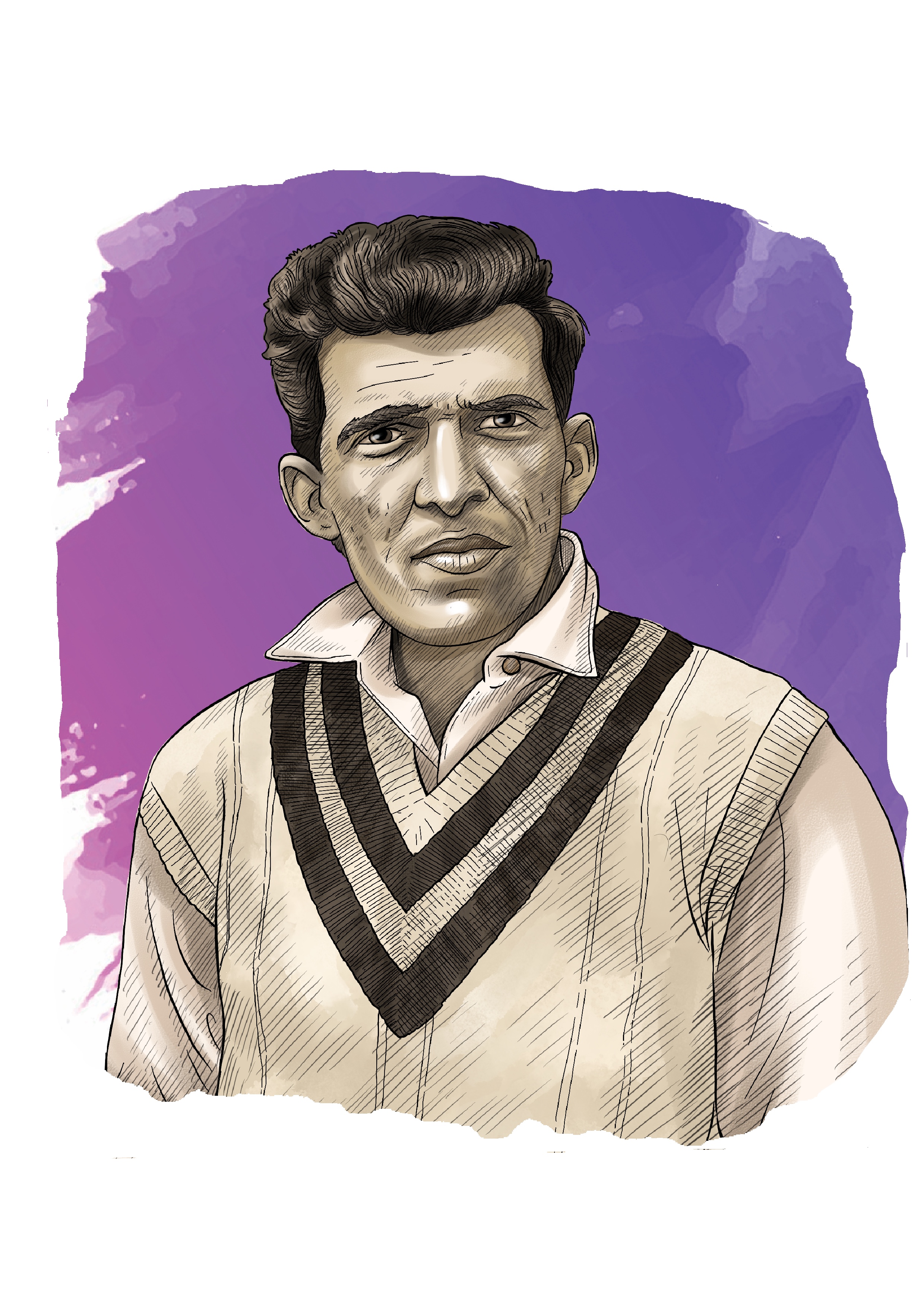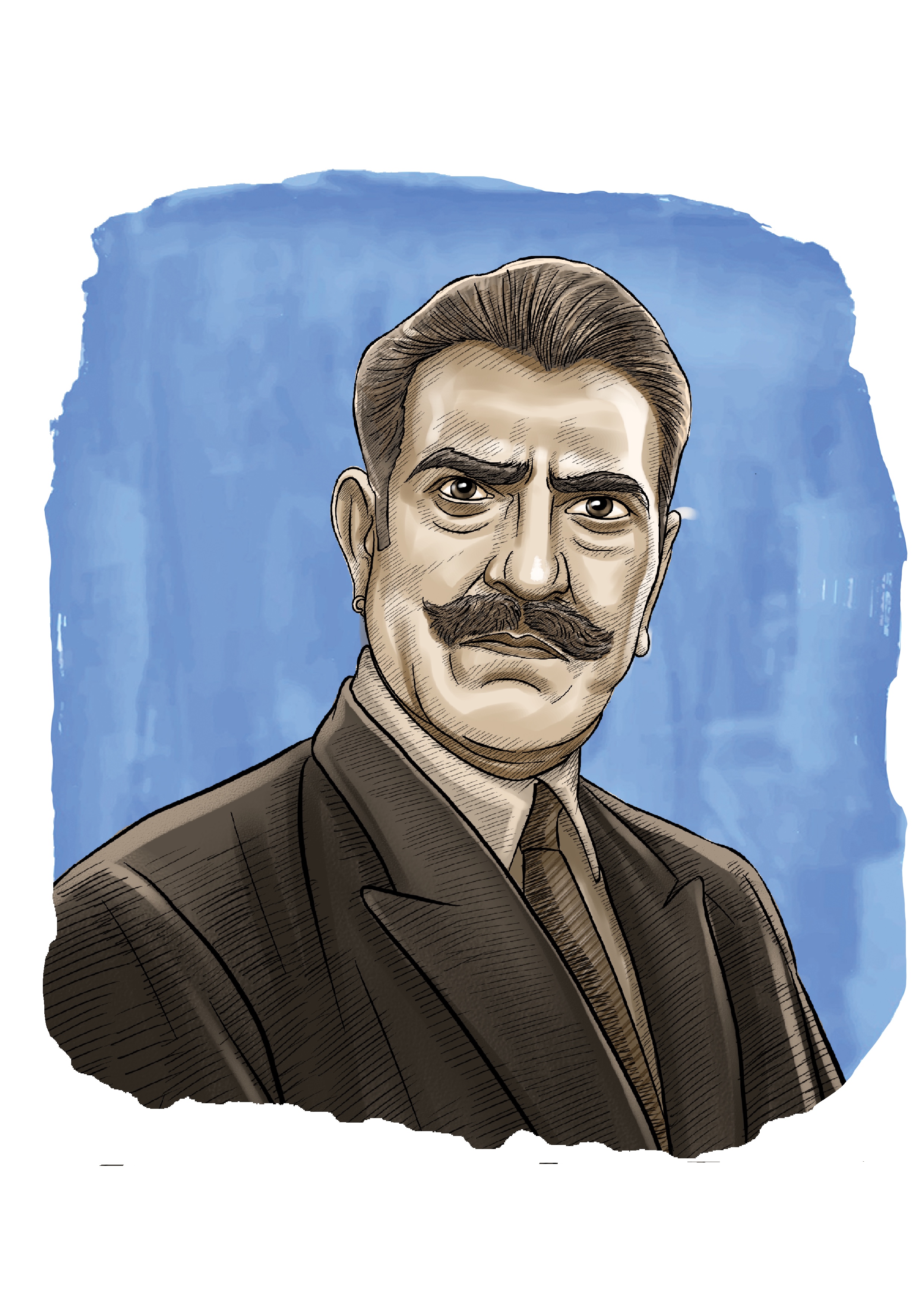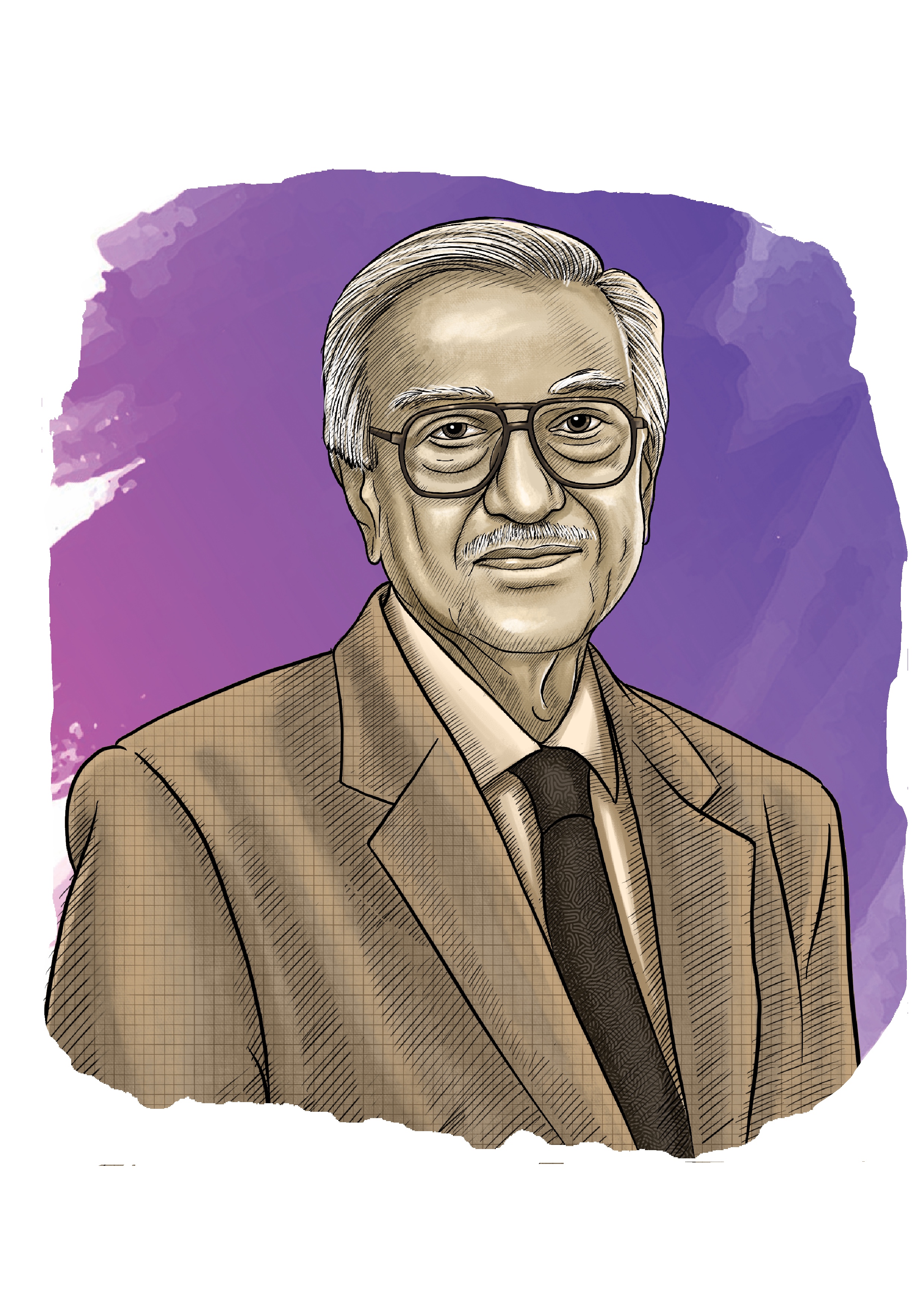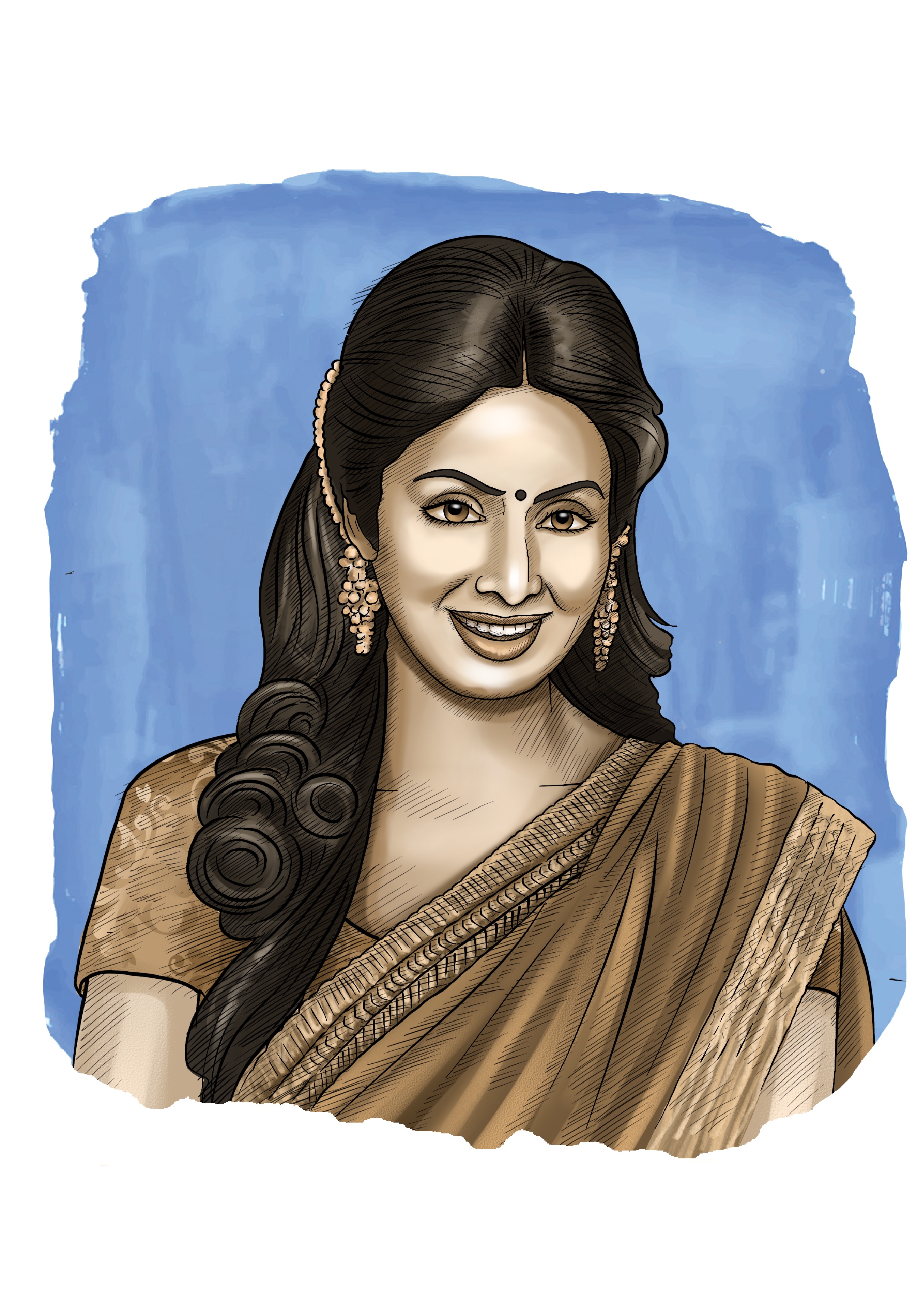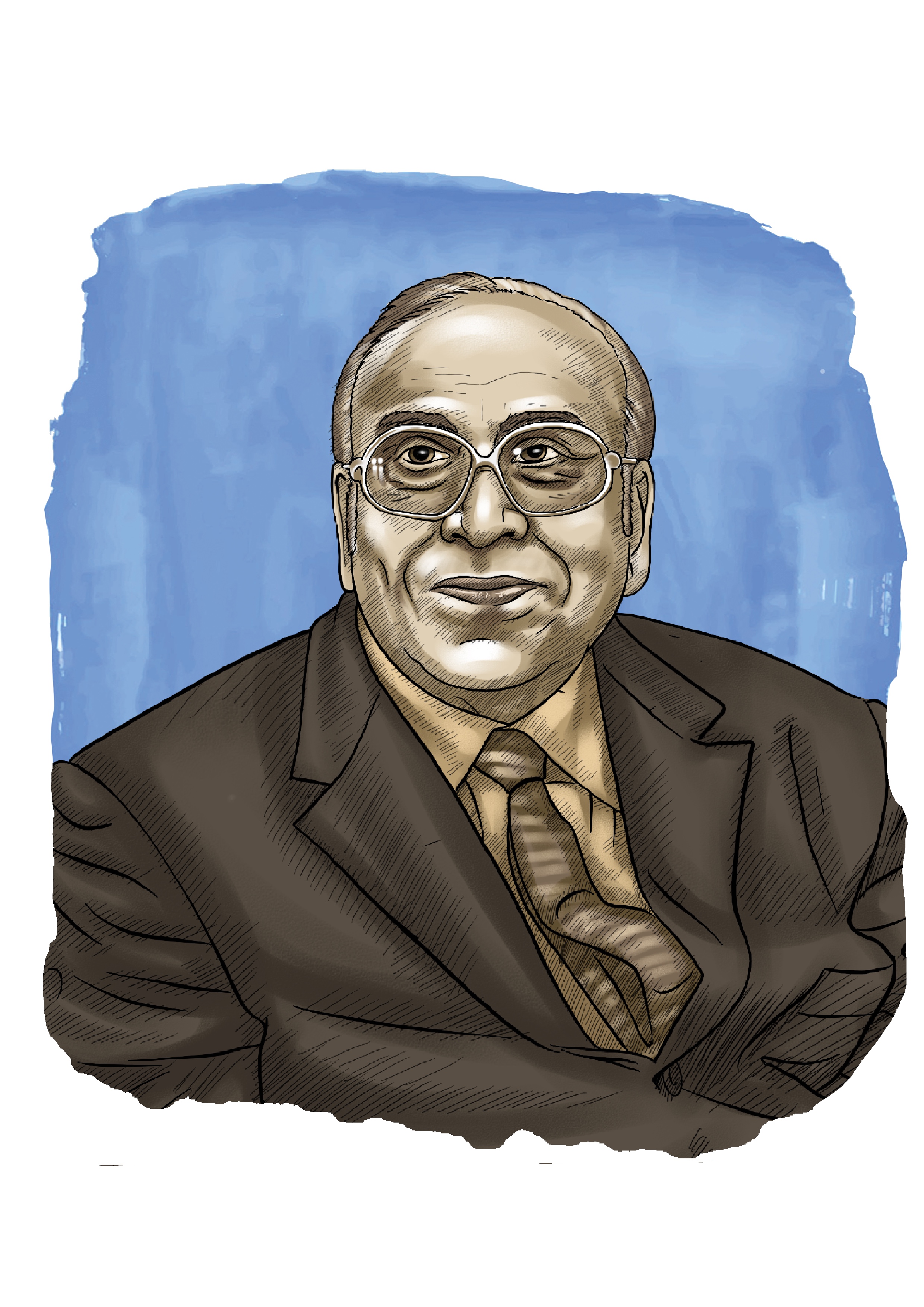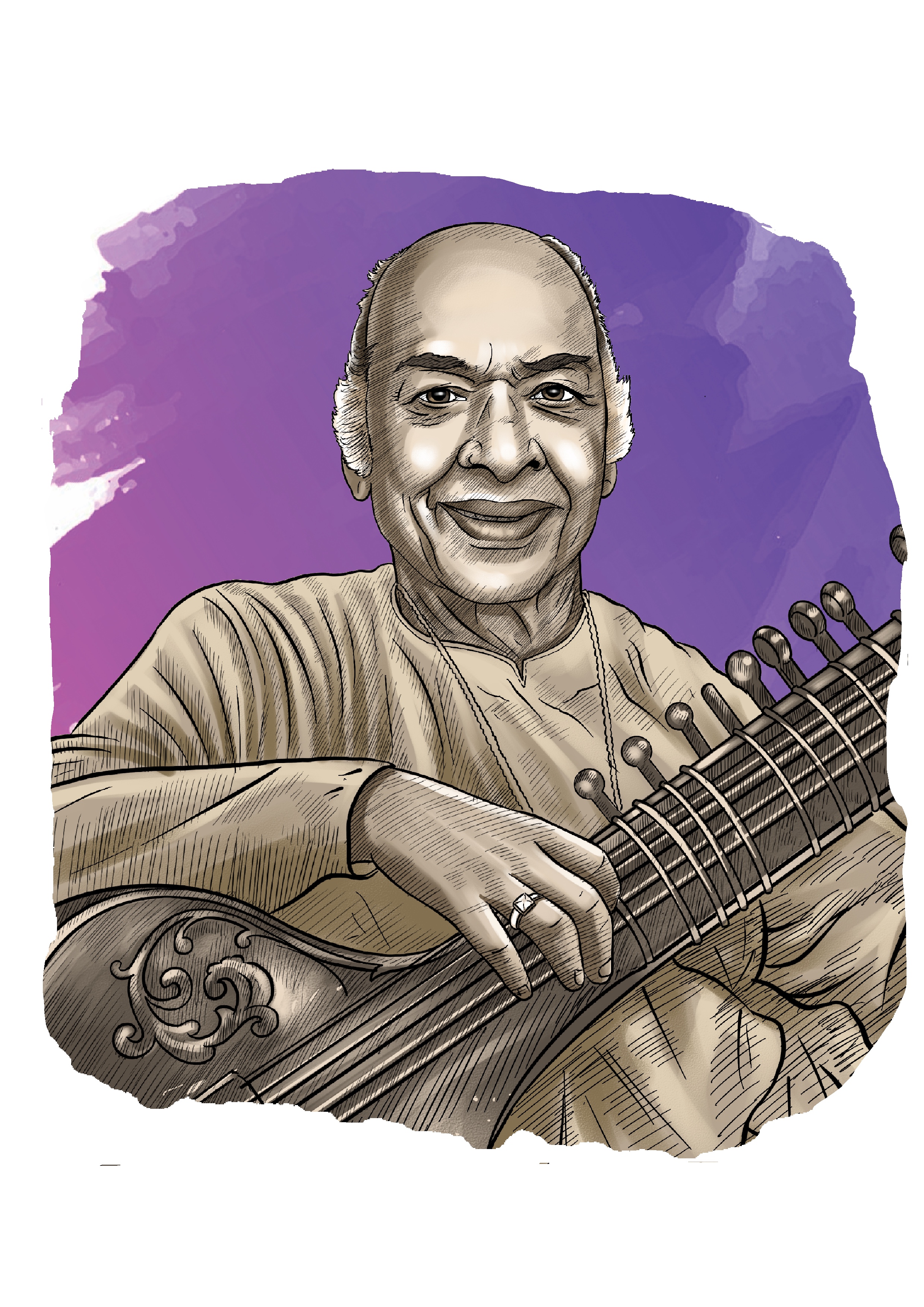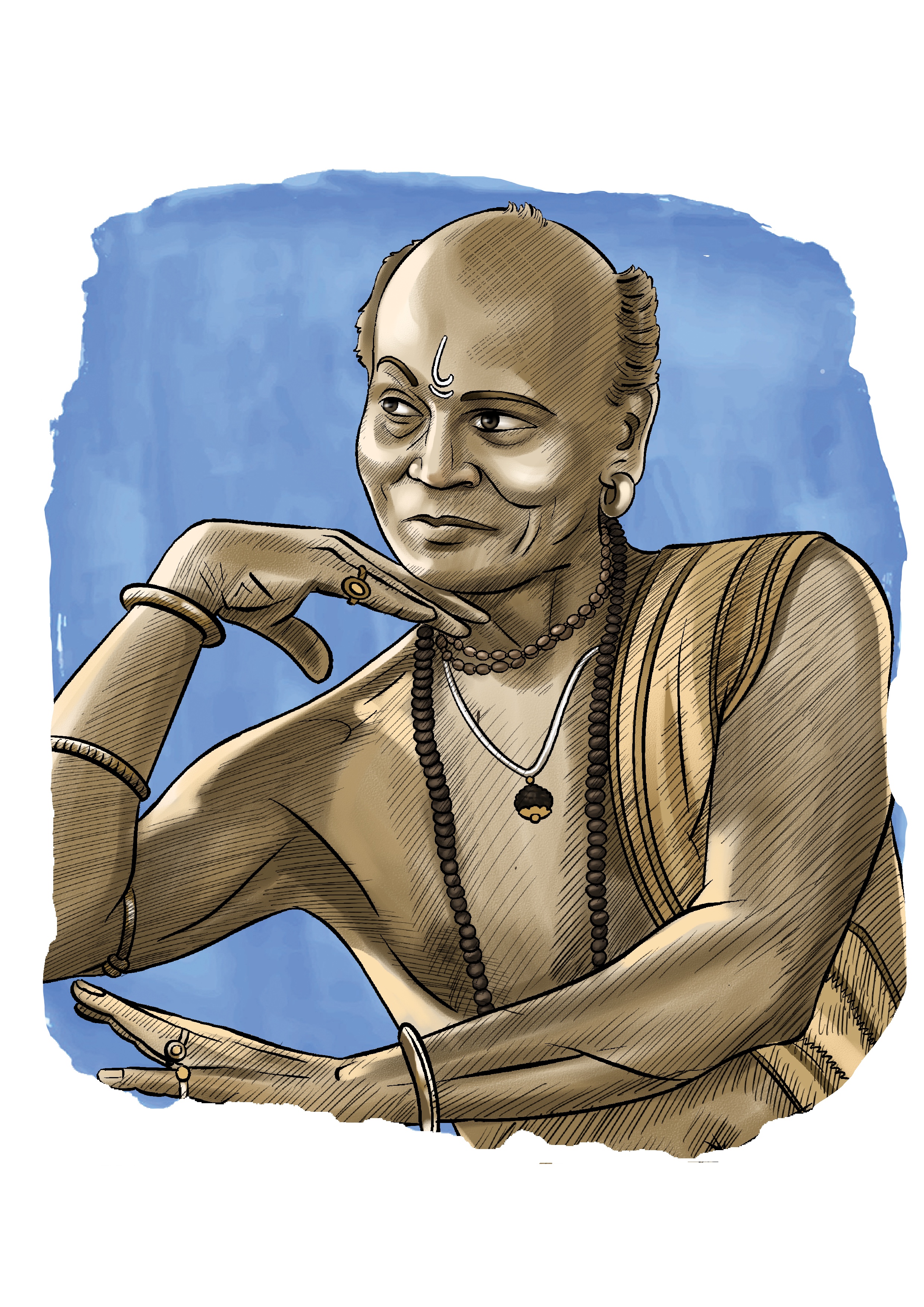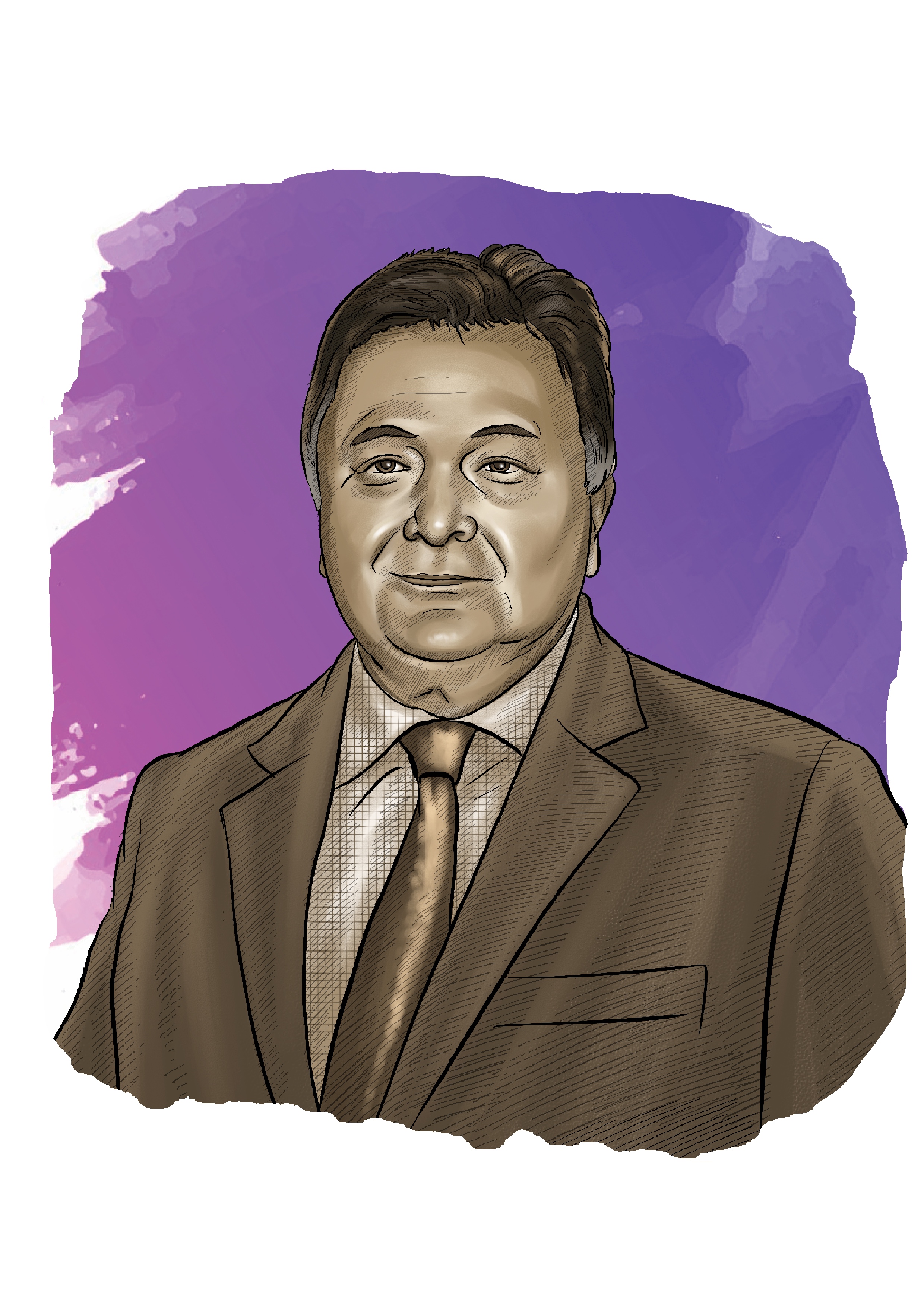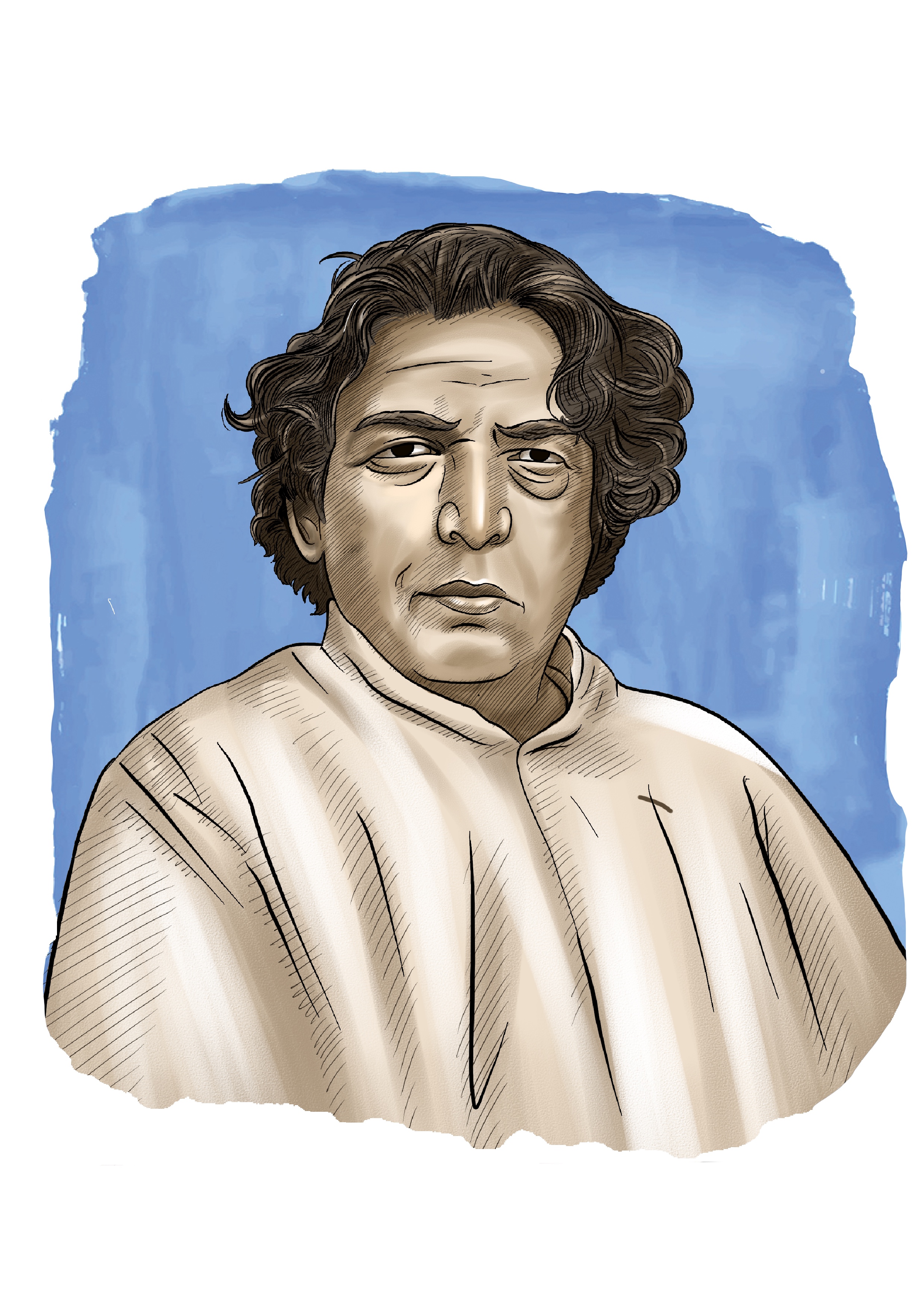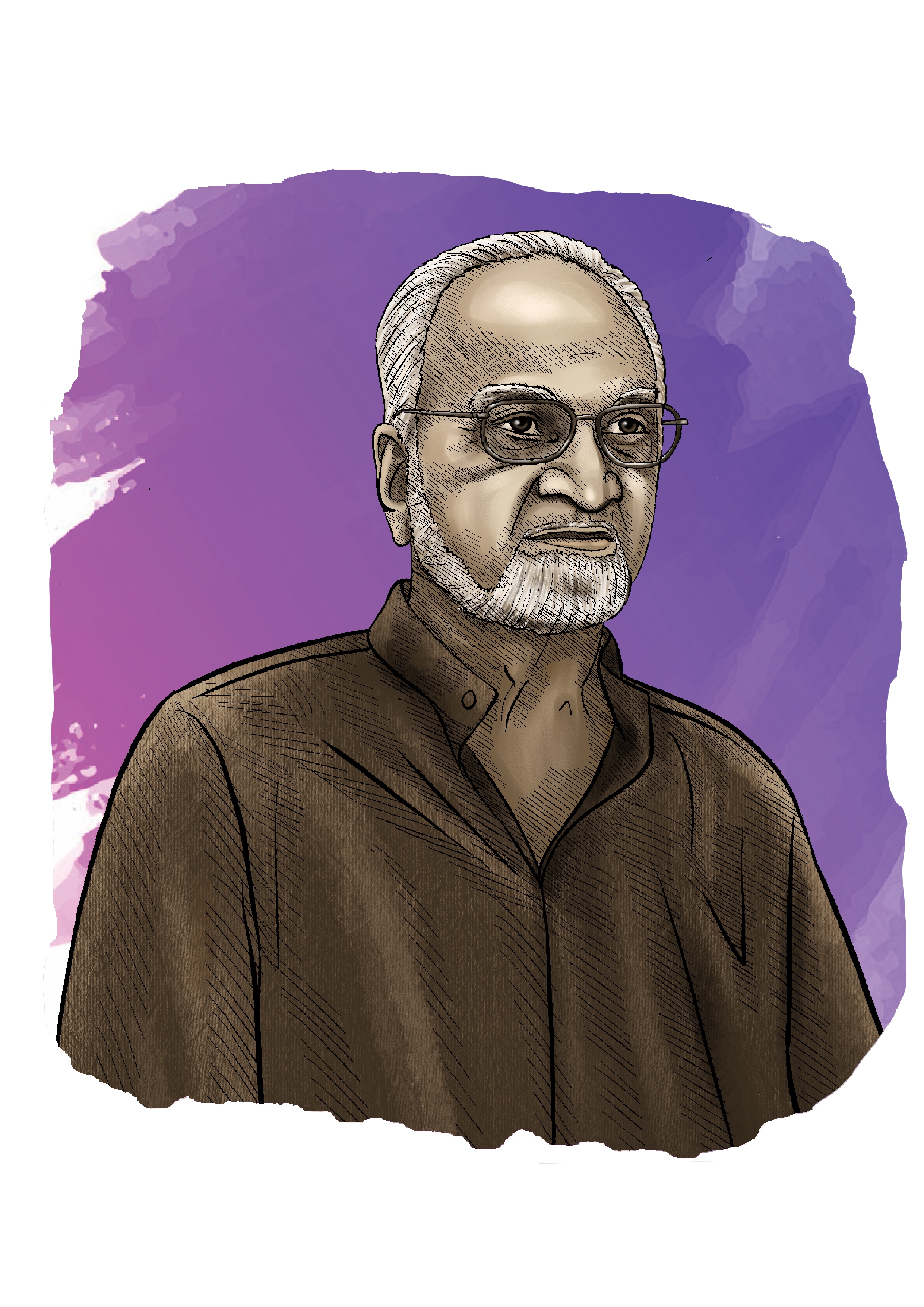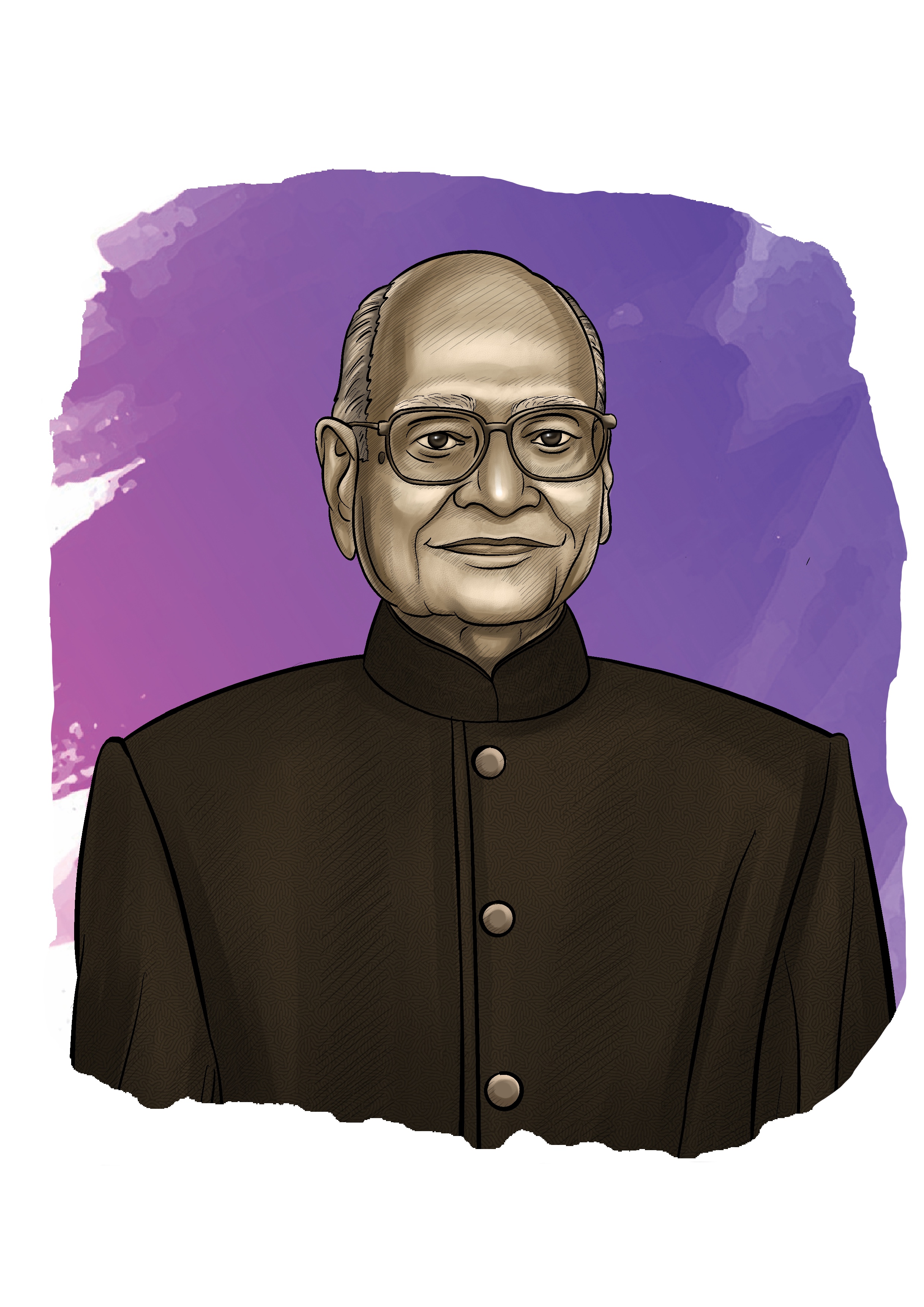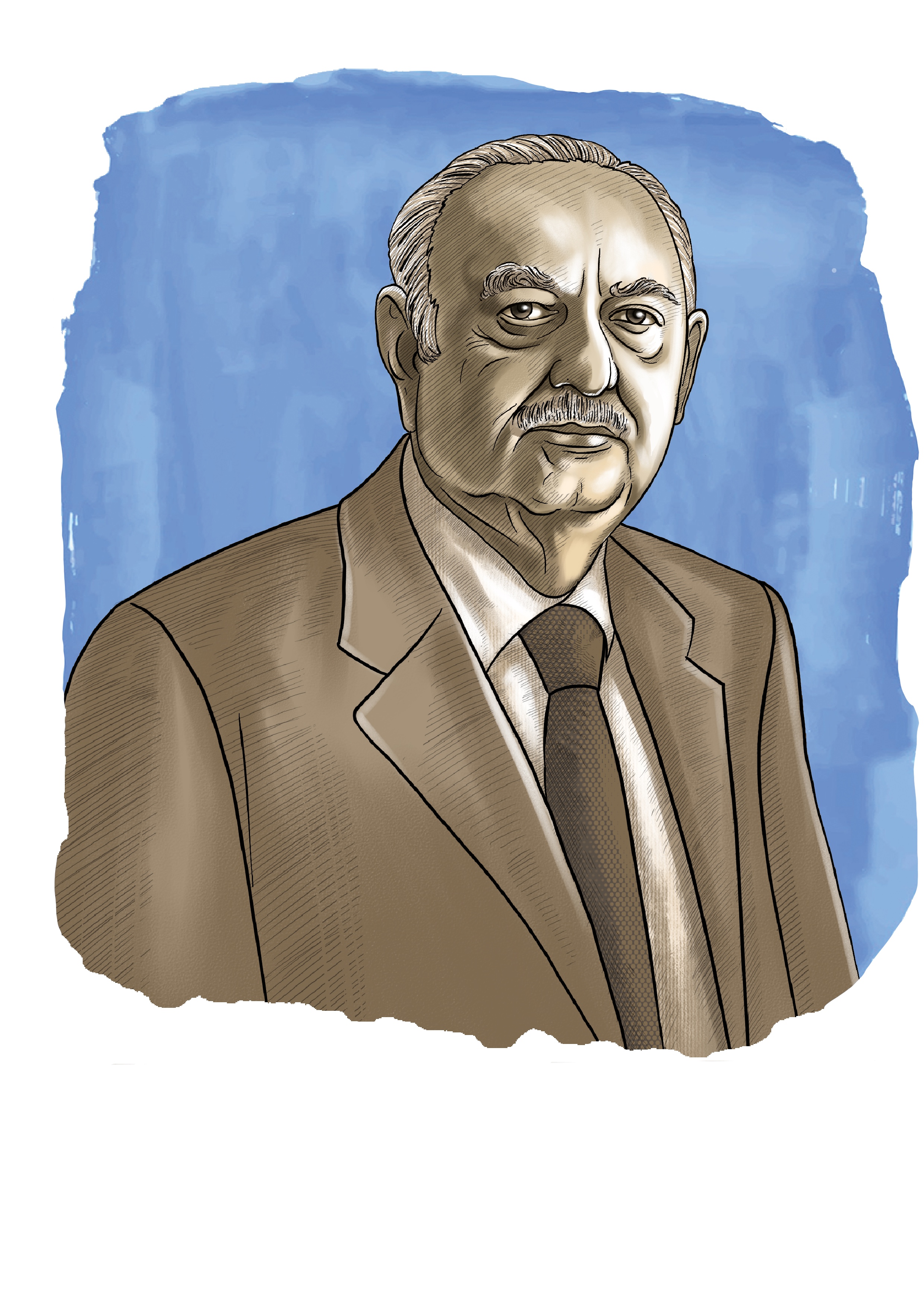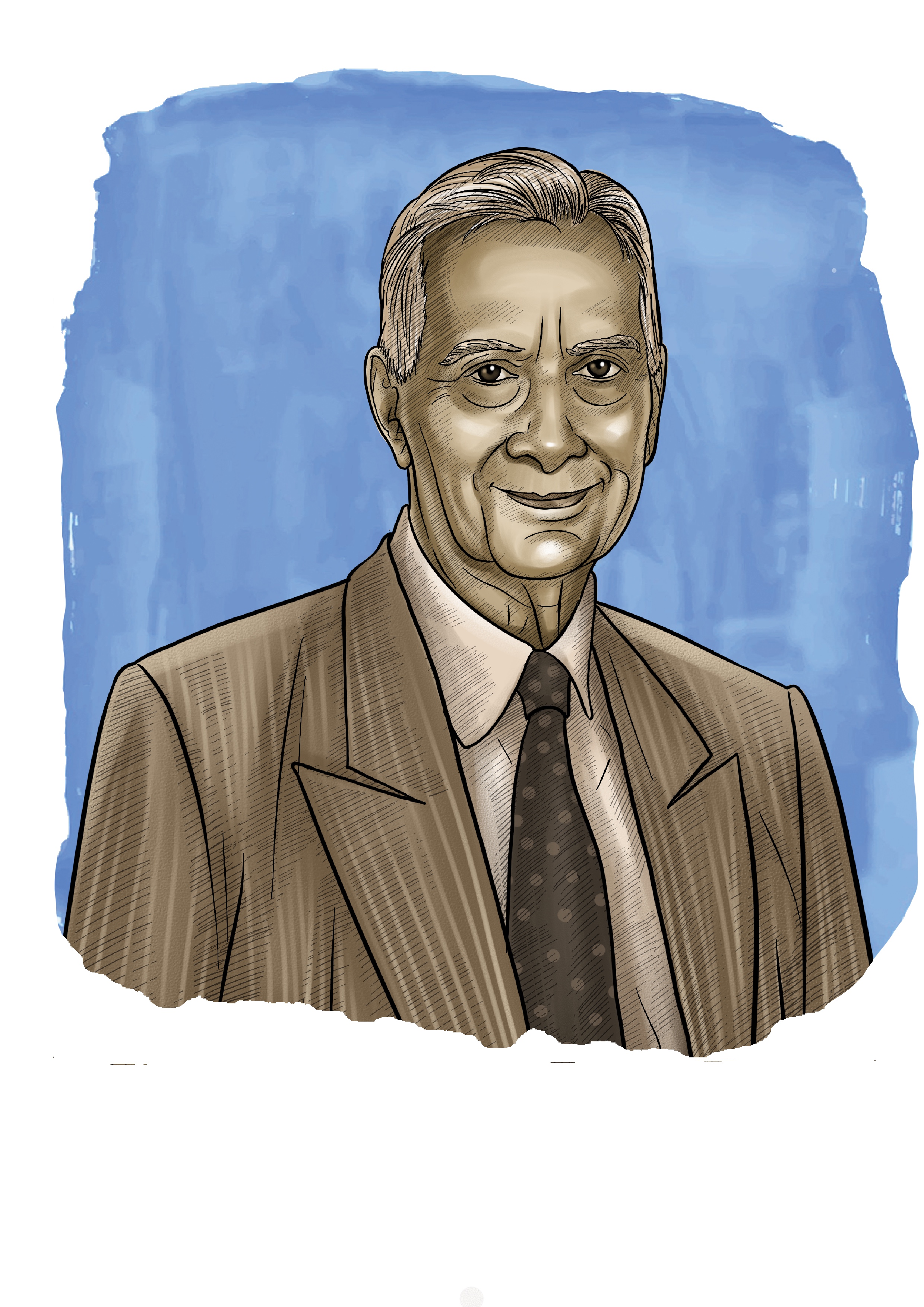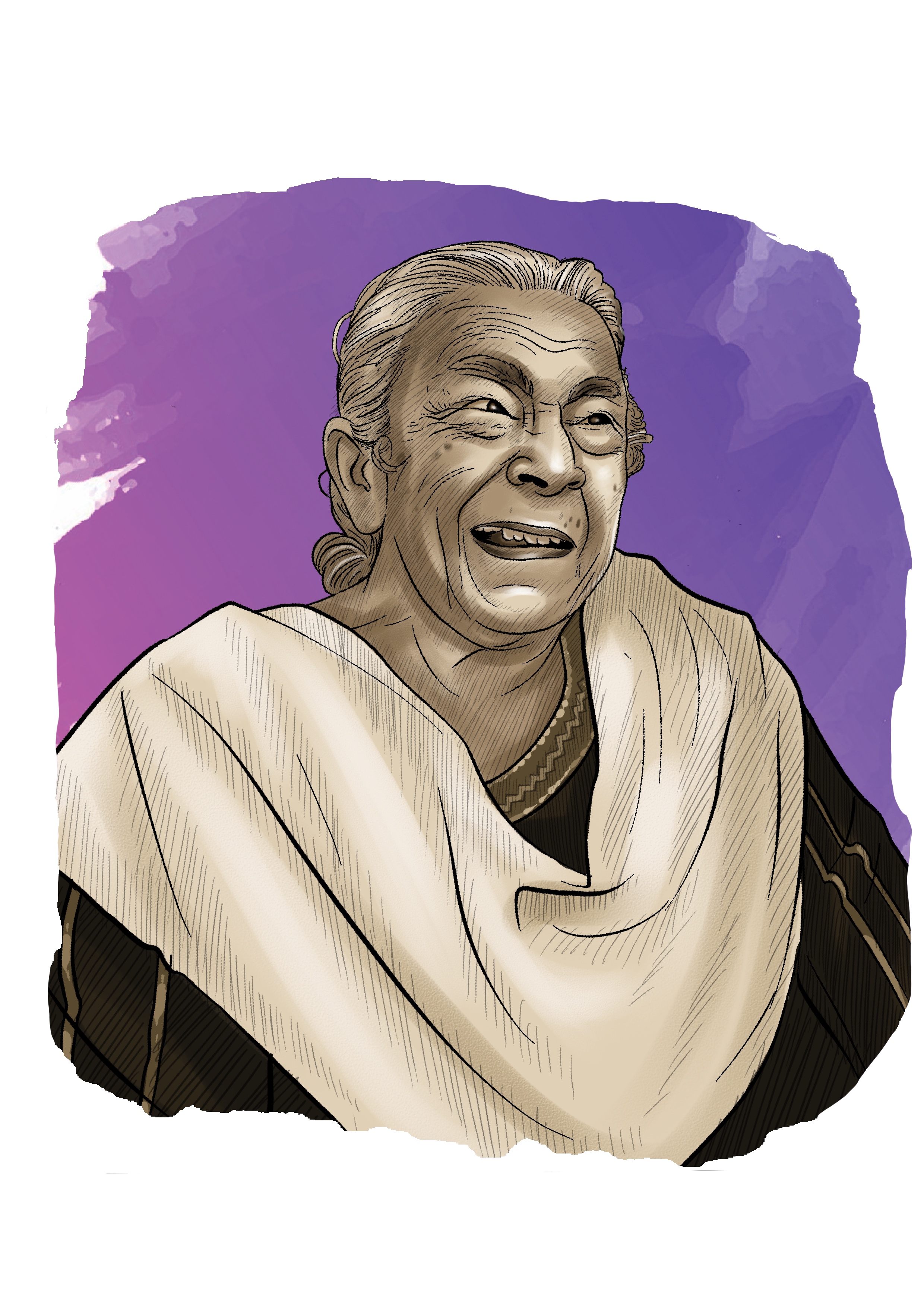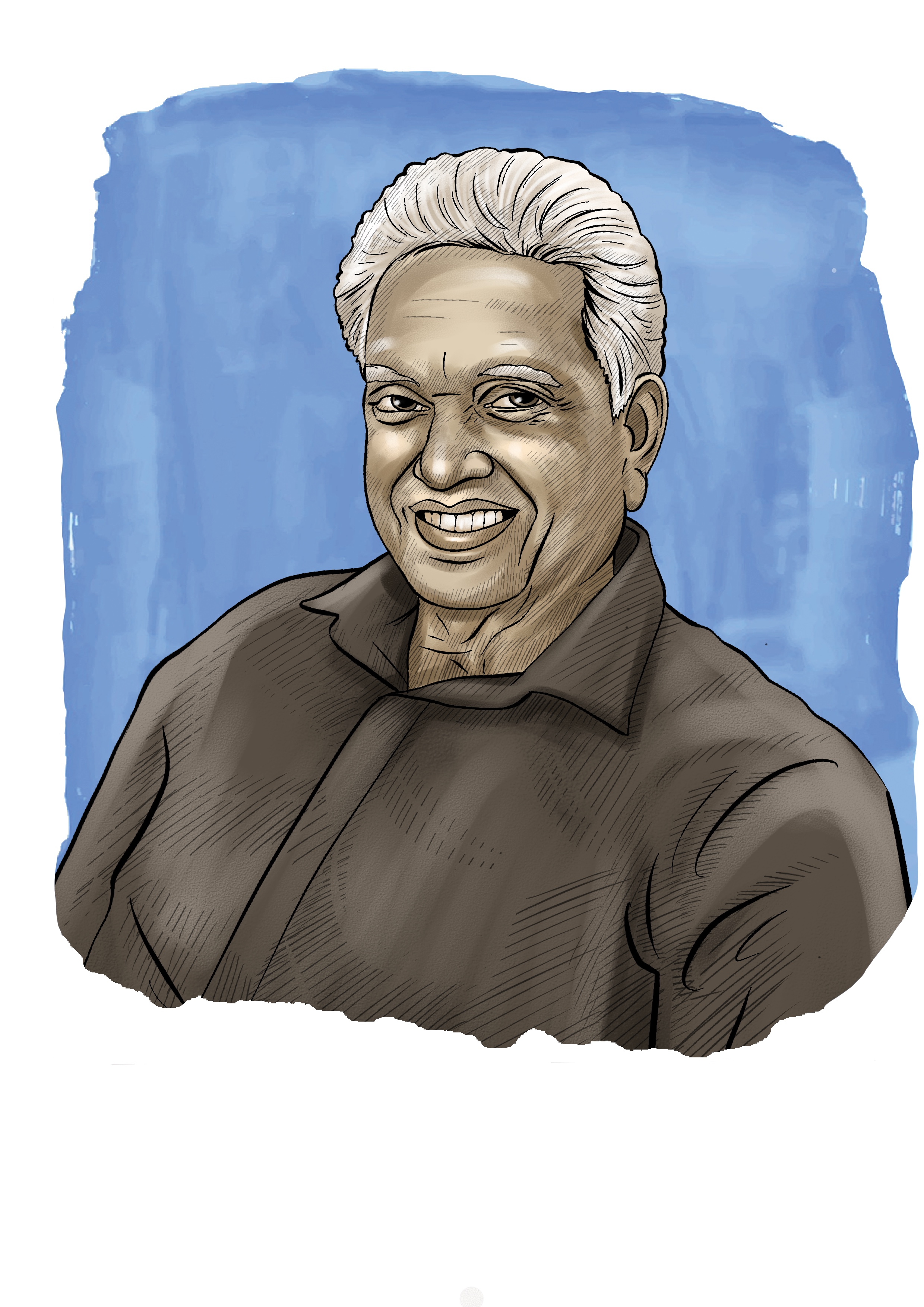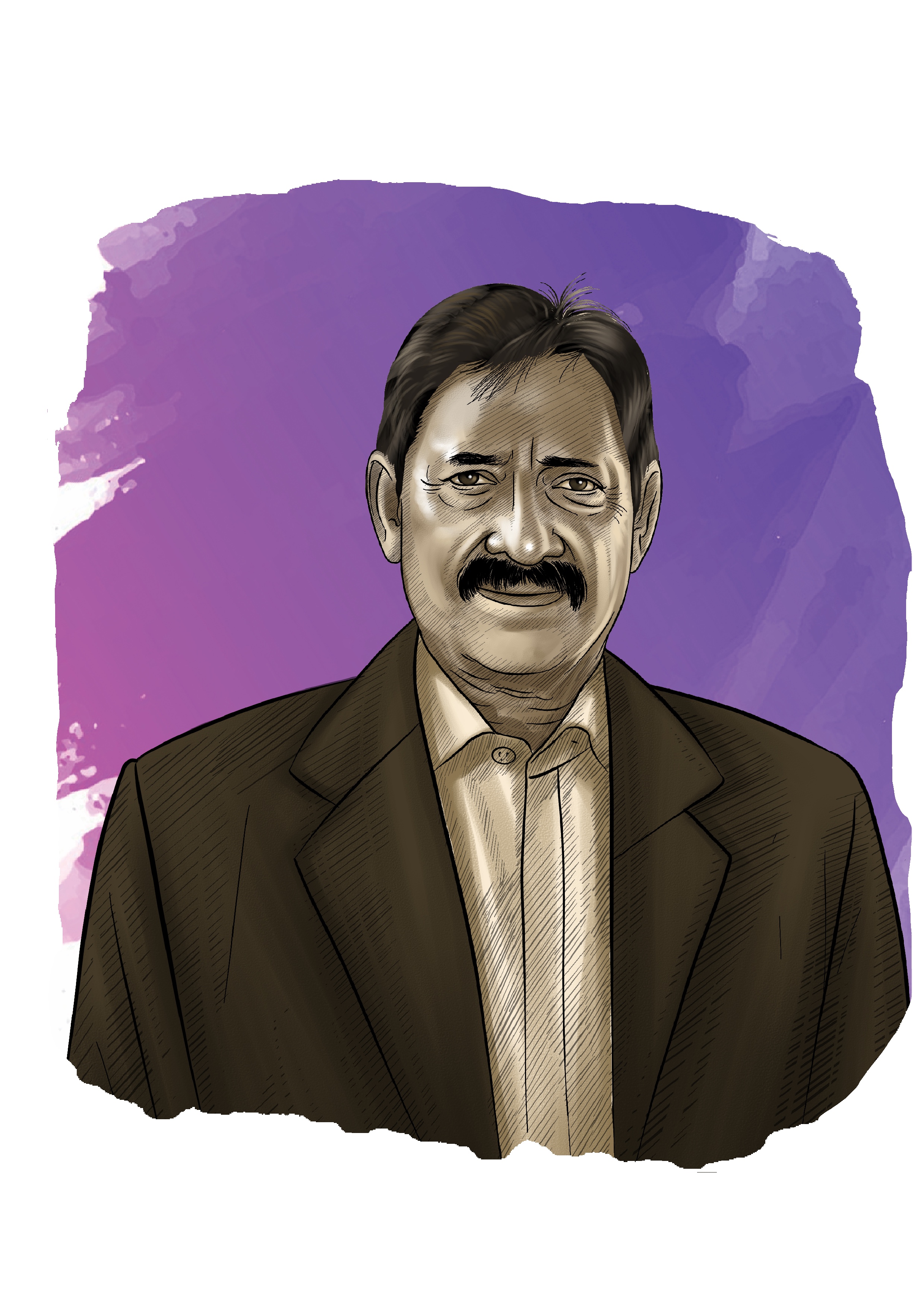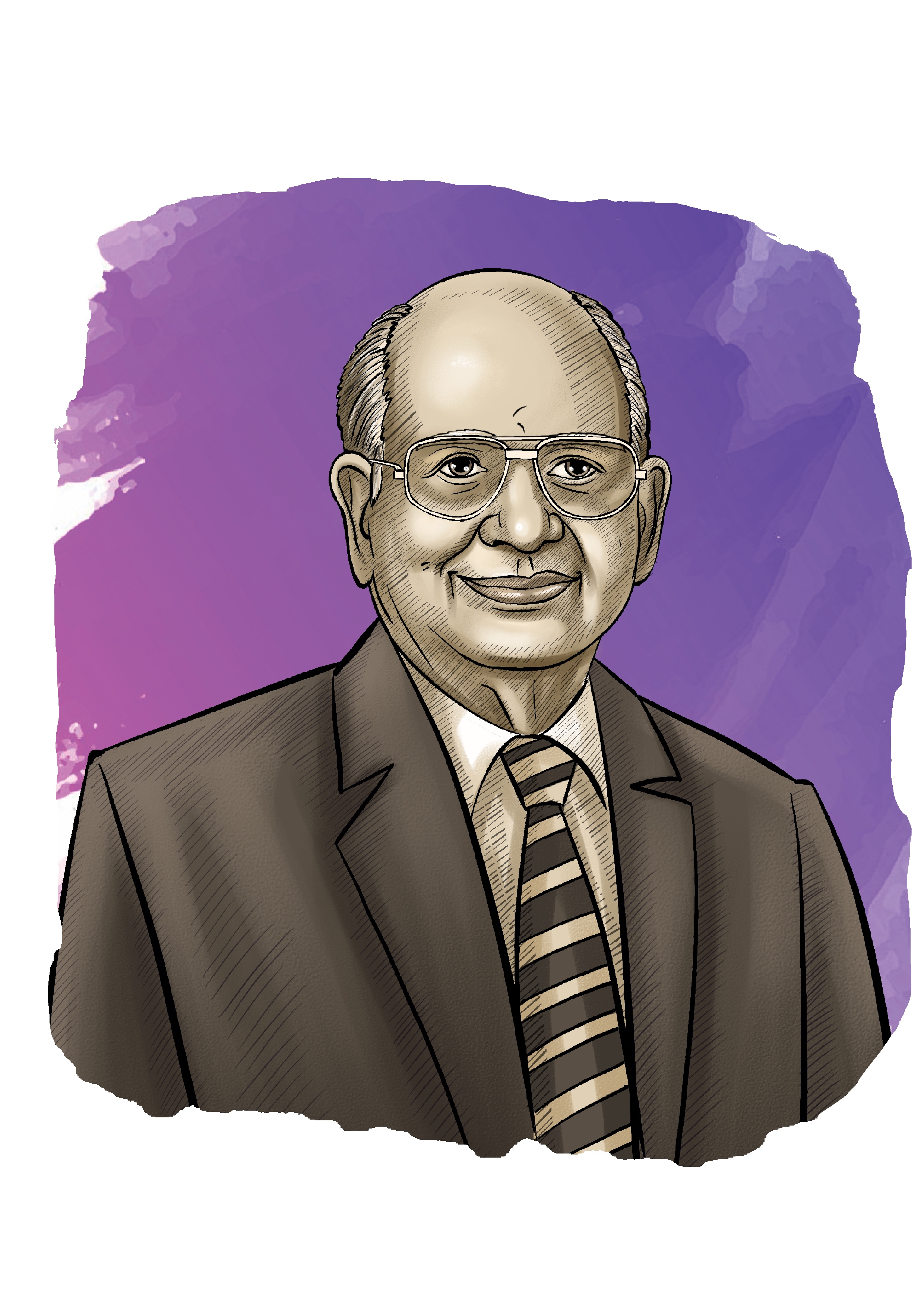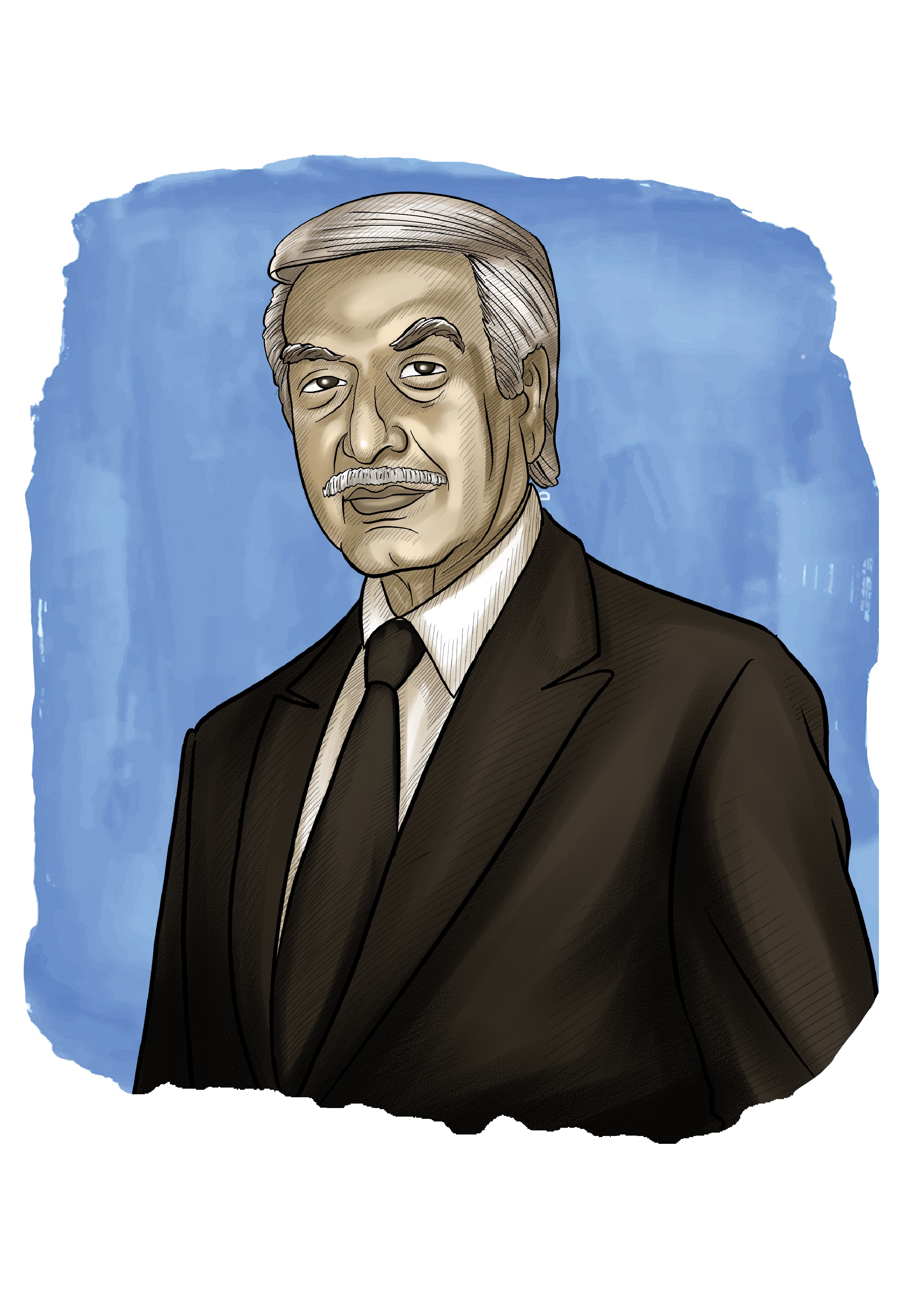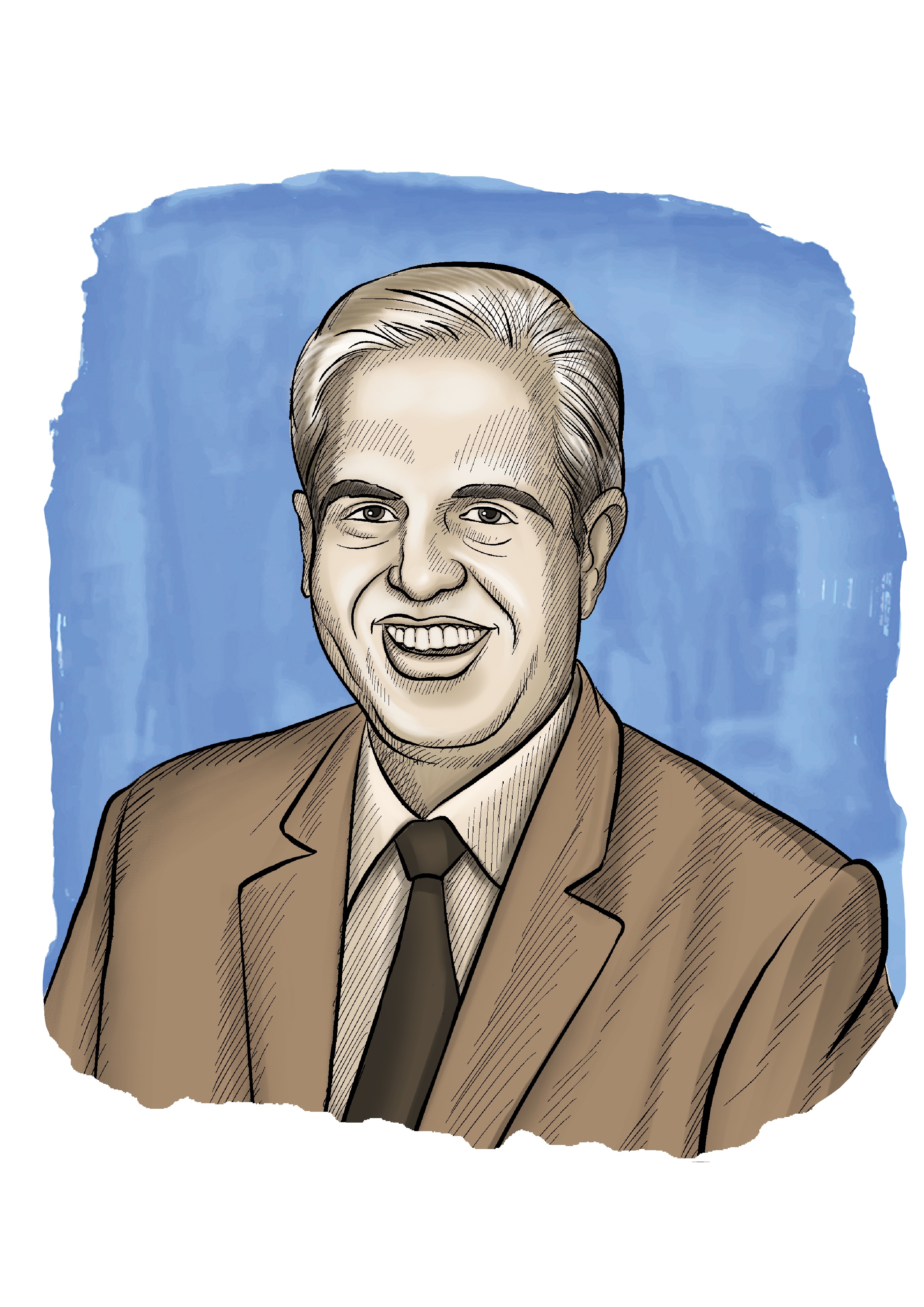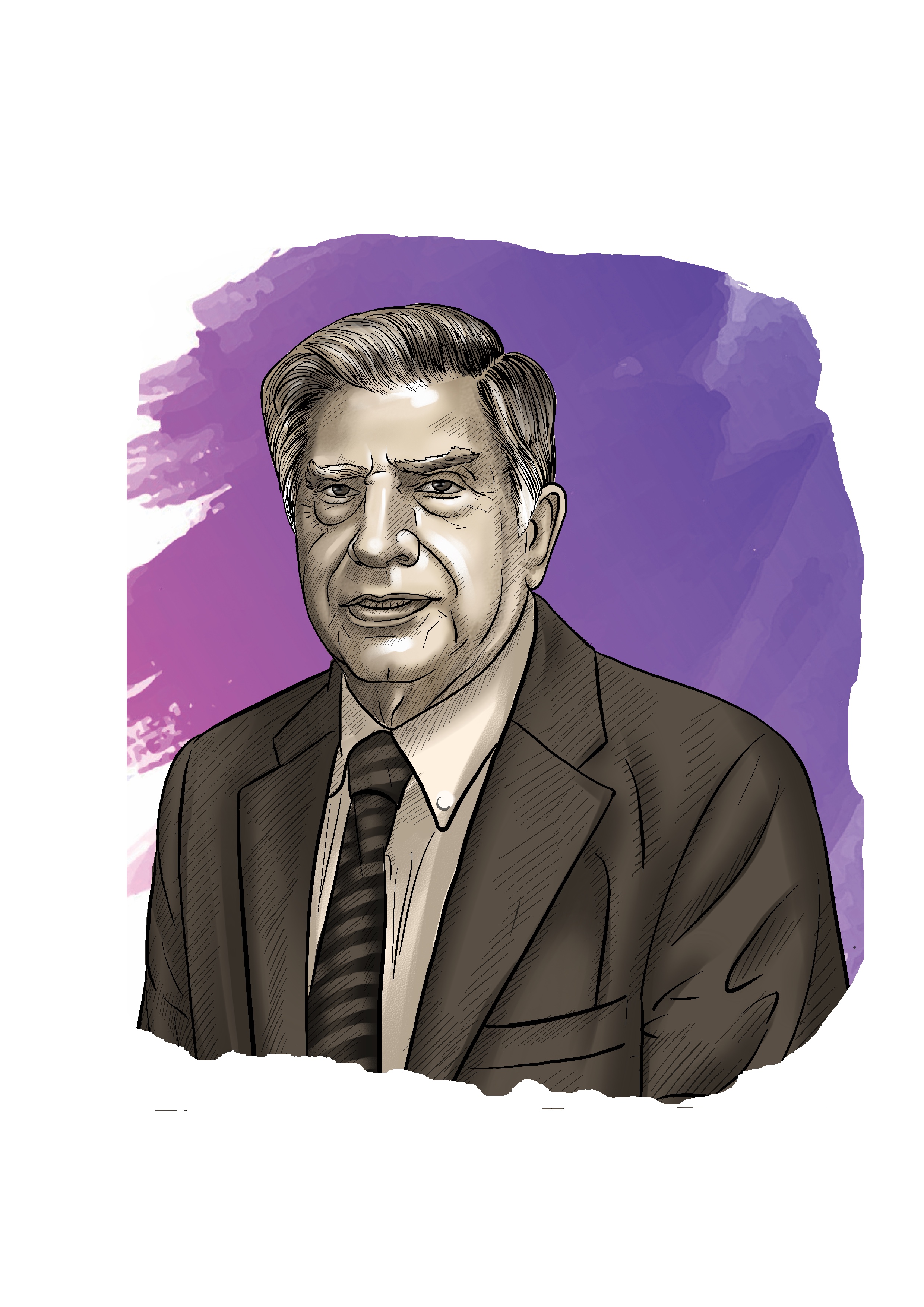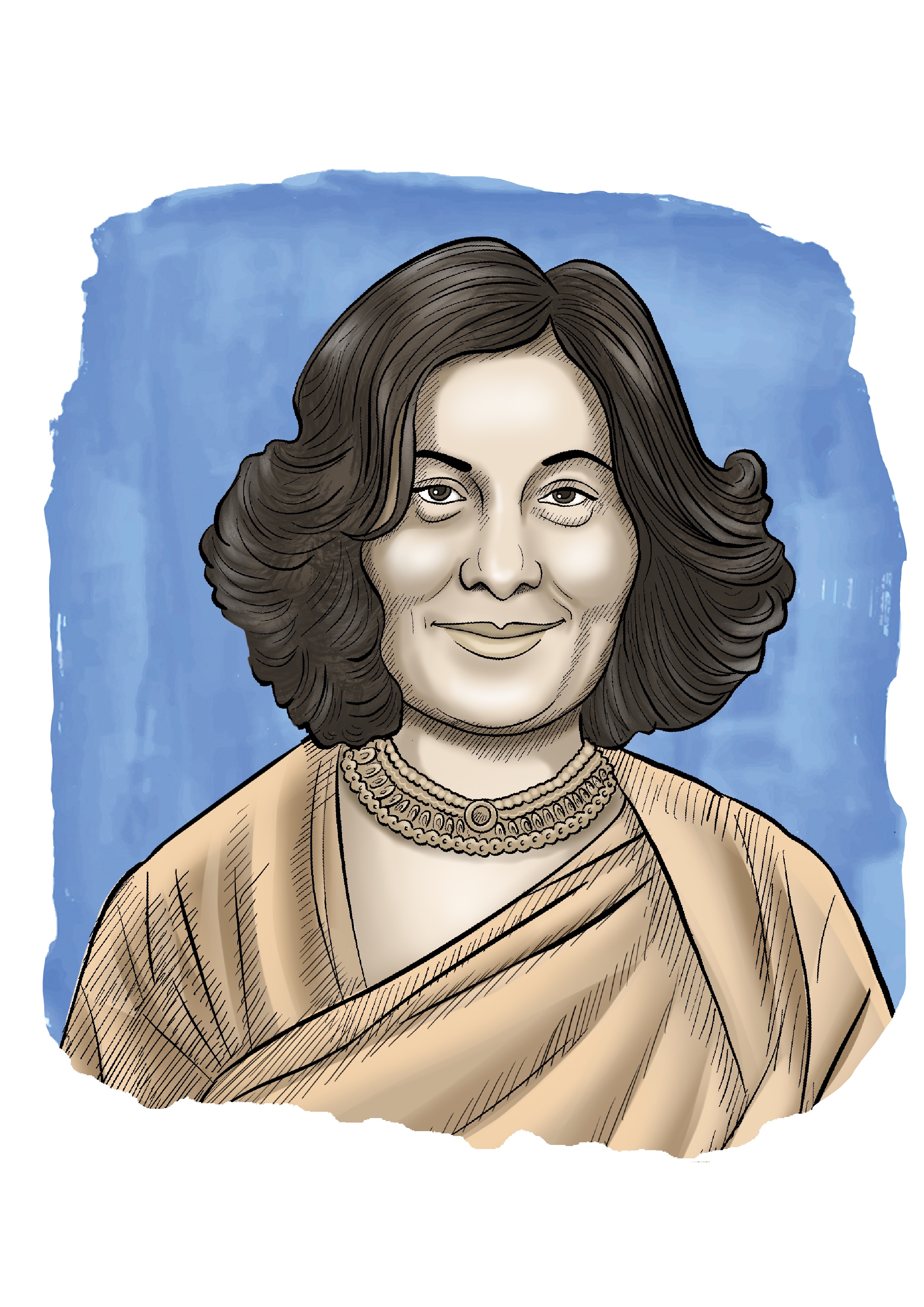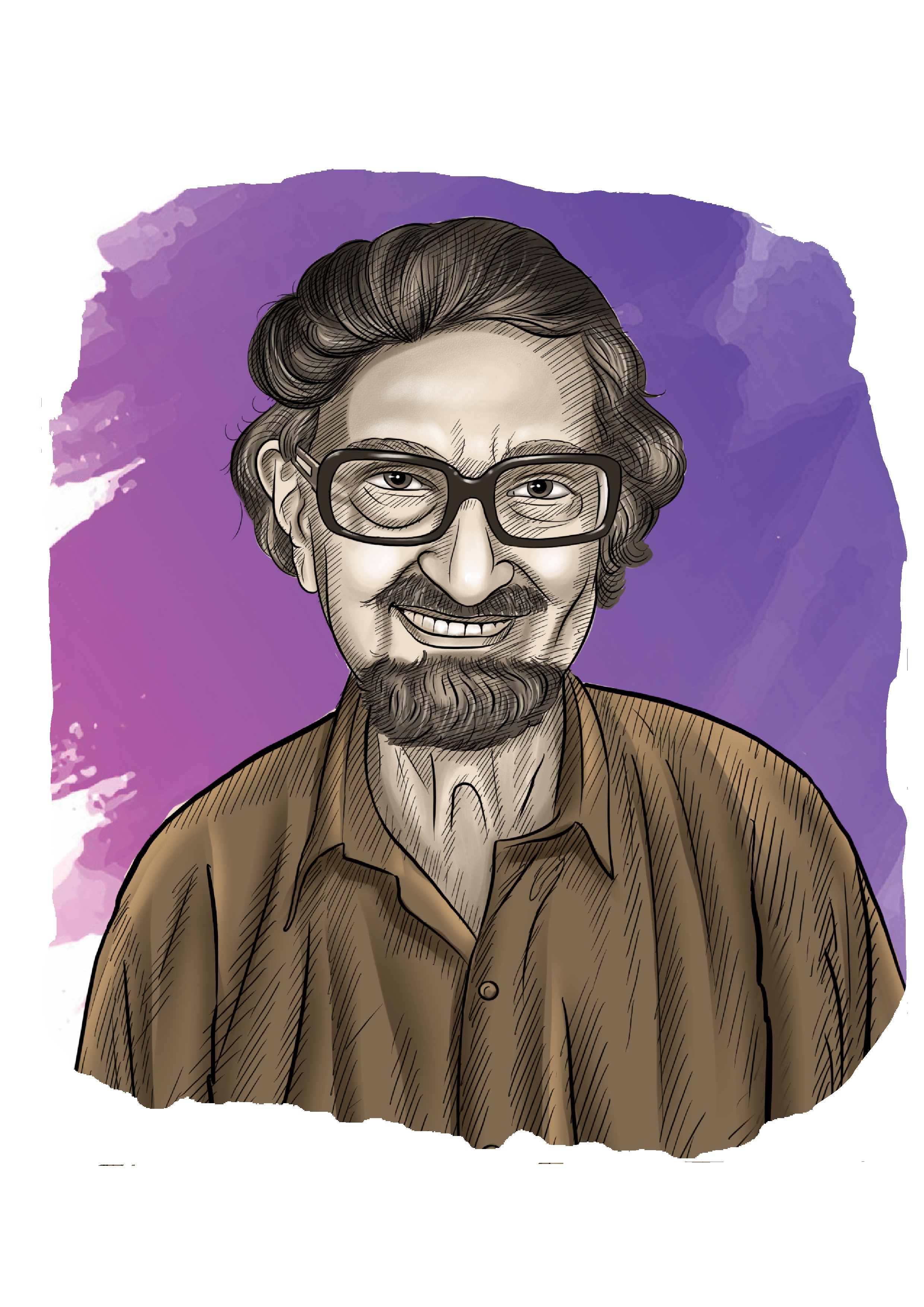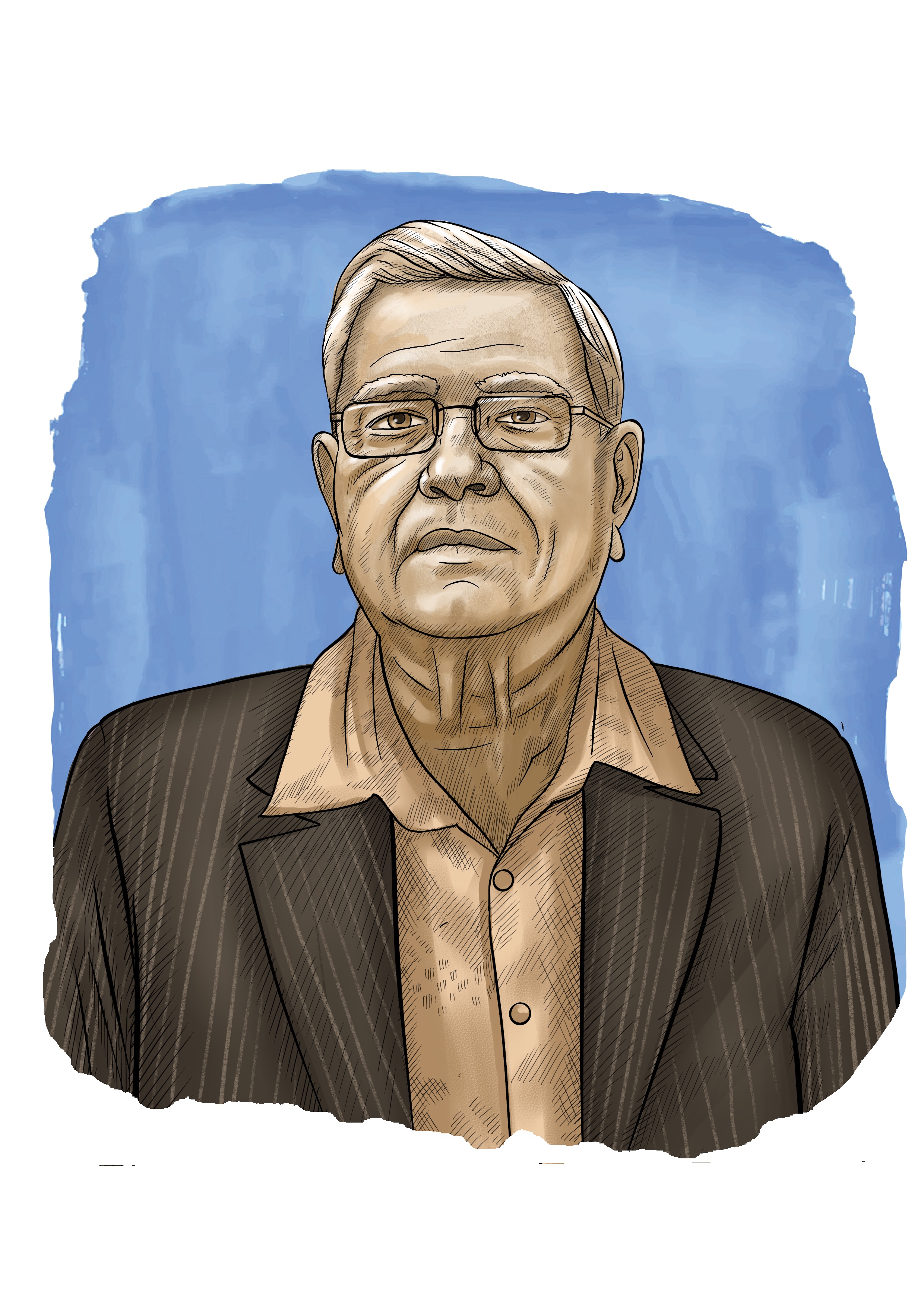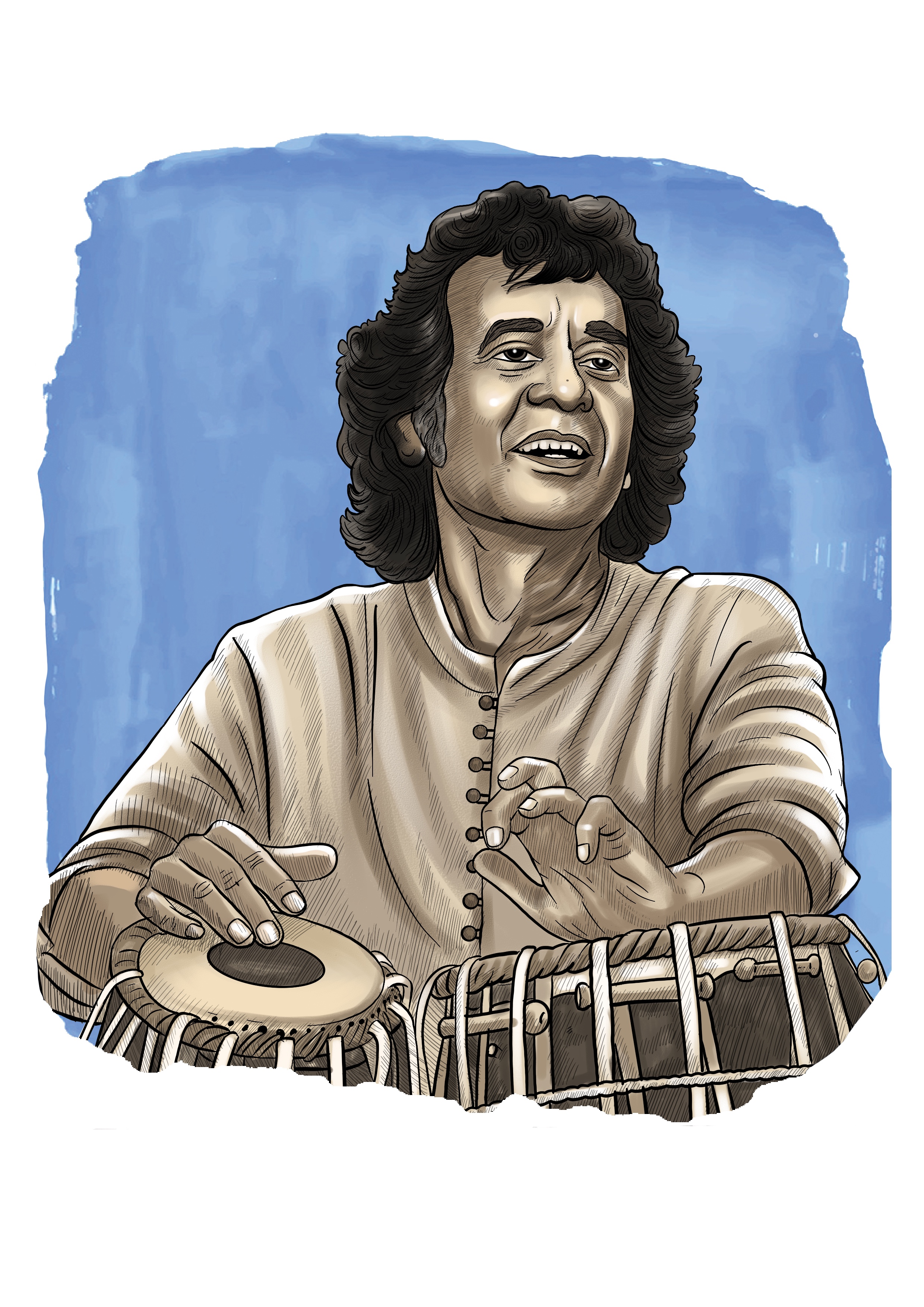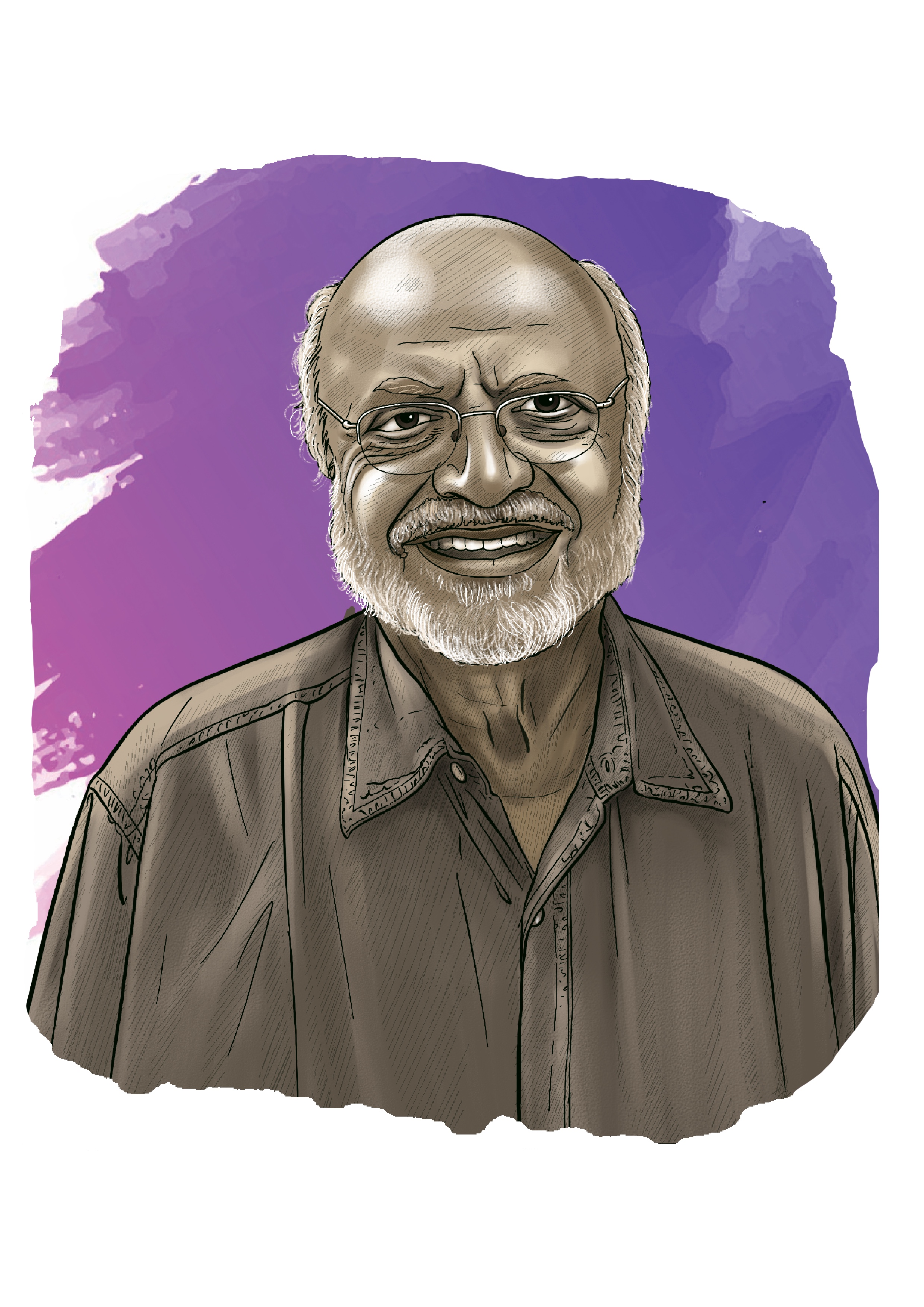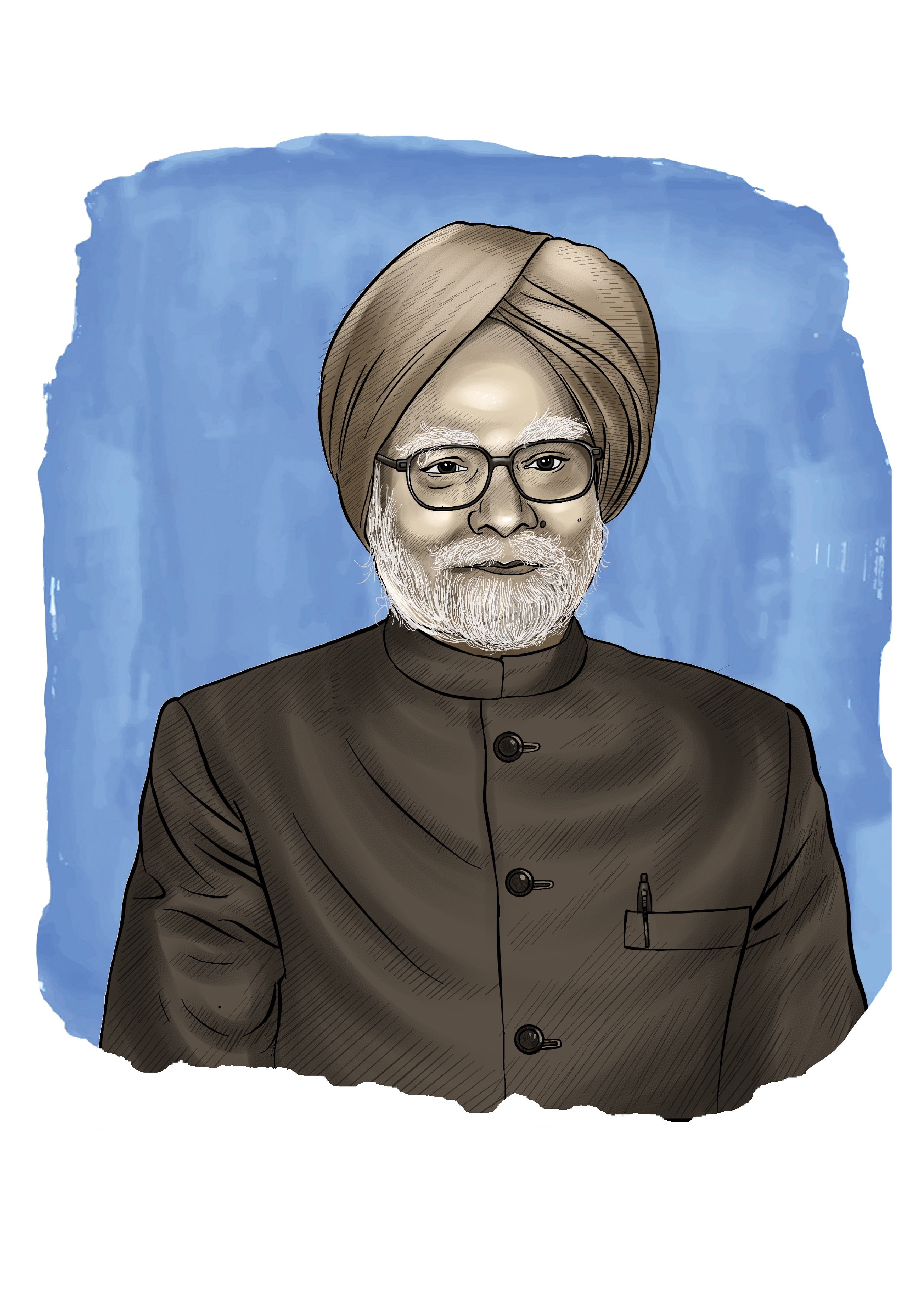What do you want to do?
- Science & Tech
- Sports
- Entertainment & Culture
Science & Tech
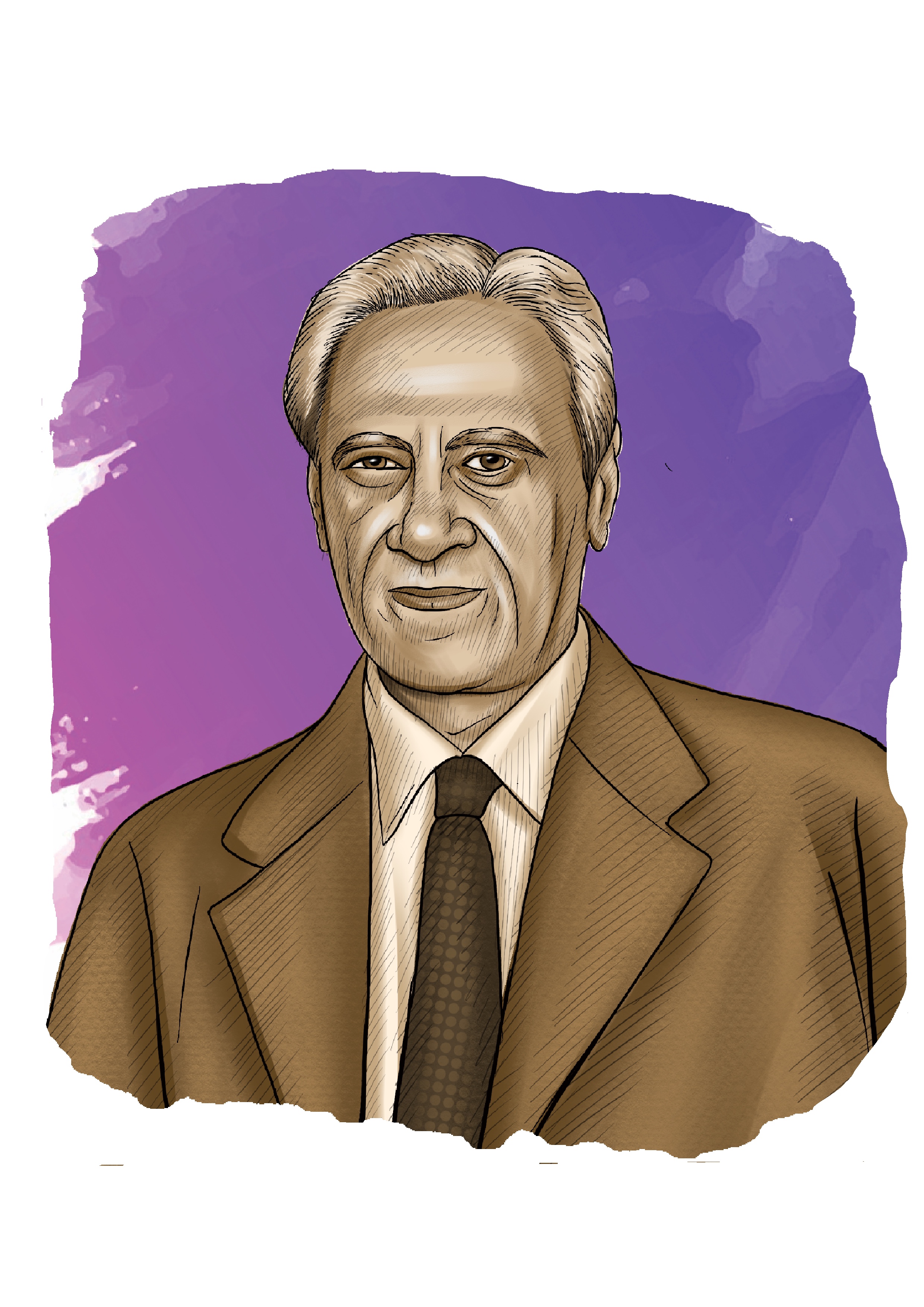
Satish Dhawan
Engineer. Peacenik. Guru.
(25 September 1920 - 3 January 2002)
Karma yogi is a curious descriptor for a man who aimed for the moon, invoking the virtues of faith rather than science. Nevertheless, his colleagues at ISRO saw fit to refer to Professor Satish Dhawan—a man whose first love was teaching, and who was a good one at that—as such. His devotion to his work demanded this quiet reverence.
Dhawan, a visionary scientist and the architect of India’s space programme, passed away at the age of 81. He is revered as the father of experimental fluid dynamics in India. He is remembered with deep respect and admiration.
Born on 25 September 1920 in Srinagar, Satish Dhawan displayed an early aptitude for science and engineering. He obtained a Bachelor's degree in Mathematics and Physics from the University of the Punjab in Lahore. He then moved to the United States, where he got a Master's degree in Aeronautical Engineering from the University of Minnesota, followed by a PhD from the California Institute of Technology (Caltech). Dhawan honed his skills at Caltech. This would later play a crucial role in his scientific career.
Dhawan returned to India in 1951 and joined the Indian Institute of Science (IISc) in Bangalore. Here, he established the country’s first supersonic wind tunnel. It was used to fine-tune the Tejas fighter jet, several years before the plane became combat-worthy. In 1962, he became the Director of IISc. He held the position for nearly two decades and fostered an environment of research excellence and innovation.
Dhawan’s rigour and thinking out of the box, characteristics required of a man preparing for a moonshot, came to the fore when he was called upon to judge the airworthiness of the HS-748 aircraft being used by Indian Airlines.
Dhawan also contributed heavily to boundary layer research, which was crucial to understand airflow over surfaces, a key aspect in designing planes and rockets. He laid the groundwork for much of India's advancements in aerospace. Dhawan also set up India’s first jet propulsion laboratory and initiated advanced research in turbulence and flow stability. This consolidated his role as a pioneer in aerospace engineering.
However, Dhawan's most enduring legacy lies with ISRO. In 1972, he succeeded Vikram Sarabhai as the Chairman of the organisation, a position he accepted under the condition that he would continue to lead IISc.
During his tenure at ISRO, he oversaw the development of the SLV-3 (Satellite Launch Vehicle), which successfully launched the Rohini satellite into orbit in 1980. India thus became one of the few nations capable of launching satellites.
His leadership style was marked by his hands-on approach and his emphasis on indigenous development. Dhawan’s insistence on indigenous technology was commendable. P. Balaram, an ex-director of IISc, wrote, ‘The space program has a wonderfully romantic history, with Satish Dhawan as the guiding force.’
An anecdote from his tenure at ISRO highlights Dhawan’s humility and leadership. When the first experimental flight of the SLV-3 failed in 1979, he faced the media and took full ownership, shielding his team from criticism. However, when the mission succeeded the following year, he ensured that the team received all the credit.
Dhawan mentored numerous scientists. Prominent among his protégés was A.P.J. Abdul Kalam, who later became the President of India. Kalam recalled Dhawan as a guiding light whose encouragement was crucial in his own journey as a scientist. Dhawan was awarded the Padma Vibhushan, India’s second-highest civilian award, in 1981. He had received the Padma Bhushan ten years earlier.
Despite these honours, he remained humble, always putting the collective success of his teams over personal recognition. His colleagues remember him as a man of few words but with profound impact.
Dhawan passed away on 3 January 2002. His passing was a loss to the scientific community, but his achievements live on through the thriving space programme he helped build and the many lives he touched with his wisdom and leadership.
-
Satish Dhawan
Engineer. Peacenik. Guru.
(25 September 1920 - 3 January 2002)
Karma yogi is a curious descriptor for a man who aimed for the moon, invoking the virtues of faith rather than science. Nevertheless, his colleagues at ISRO saw fit to refer to Professor Satish Dhawan—a man whose first love was teaching, and who was a good one at that—as such. His devotion to his work demanded this quiet reverence.
Dhawan, a visionary scientist and the architect of India’s space programme, passed away at the age of 81. He is revered as the father of experimental fluid dynamics in India. He is remembered with deep respect and admiration.
Born on 25 September 1920 in Srinagar, Satish Dhawan displayed an early aptitude for science and engineering. He obtained a Bachelor's degree in Mathematics and Physics from the University of the Punjab in Lahore. He then moved to the United States, where he got a Master's degree in Aeronautical Engineering from the University of Minnesota, followed by a PhD from the California Institute of Technology (Caltech). Dhawan honed his skills at Caltech. This would later play a crucial role in his scientific career.
Dhawan returned to India in 1951 and joined the Indian Institute of Science (IISc) in Bangalore. Here, he established the country’s first supersonic wind tunnel. It was used to fine-tune the Tejas fighter jet, several years before the plane became combat-worthy. In 1962, he became the Director of IISc. He held the position for nearly two decades and fostered an environment of research excellence and innovation.
Dhawan’s rigour and thinking out of the box, characteristics required of a man preparing for a moonshot, came to the fore when he was called upon to judge the airworthiness of the HS-748 aircraft being used by Indian Airlines.Dhawan also contributed heavily to boundary layer research, which was crucial to understand airflow over surfaces, a key aspect in designing planes and rockets. He laid the groundwork for much of India's advancements in aerospace. Dhawan also set up India’s first jet propulsion laboratory and initiated advanced research in turbulence and flow stability. This consolidated his role as a pioneer in aerospace engineering.
However, Dhawan's most enduring legacy lies with ISRO. In 1972, he succeeded Vikram Sarabhai as the Chairman of the organisation, a position he accepted under the condition that he would continue to lead IISc.
During his tenure at ISRO, he oversaw the development of the SLV-3 (Satellite Launch Vehicle), which successfully launched the Rohini satellite into orbit in 1980. India thus became one of the few nations capable of launching satellites.
His leadership style was marked by his hands-on approach and his emphasis on indigenous development. Dhawan’s insistence on indigenous technology was commendable. P. Balaram, an ex-director of IISc, wrote, ‘The space program has a wonderfully romantic history, with Satish Dhawan as the guiding force.’
An anecdote from his tenure at ISRO highlights Dhawan’s humility and leadership. When the first experimental flight of the SLV-3 failed in 1979, he faced the media and took full ownership, shielding his team from criticism. However, when the mission succeeded the following year, he ensured that the team received all the credit.
Dhawan mentored numerous scientists. Prominent among his protégés was A.P.J. Abdul Kalam, who later became the President of India. Kalam recalled Dhawan as a guiding light whose encouragement was crucial in his own journey as a scientist. Dhawan was awarded the Padma Vibhushan, India’s second-highest civilian award, in 1981. He had received the Padma Bhushan ten years earlier.
Despite these honours, he remained humble, always putting the collective success of his teams over personal recognition. His colleagues remember him as a man of few words but with profound impact.
Dhawan passed away on 3 January 2002. His passing was a loss to the scientific community, but his achievements live on through the thriving space programme he helped build and the many lives he touched with his wisdom and leadership.
- Sports
- Entertainment
Sports
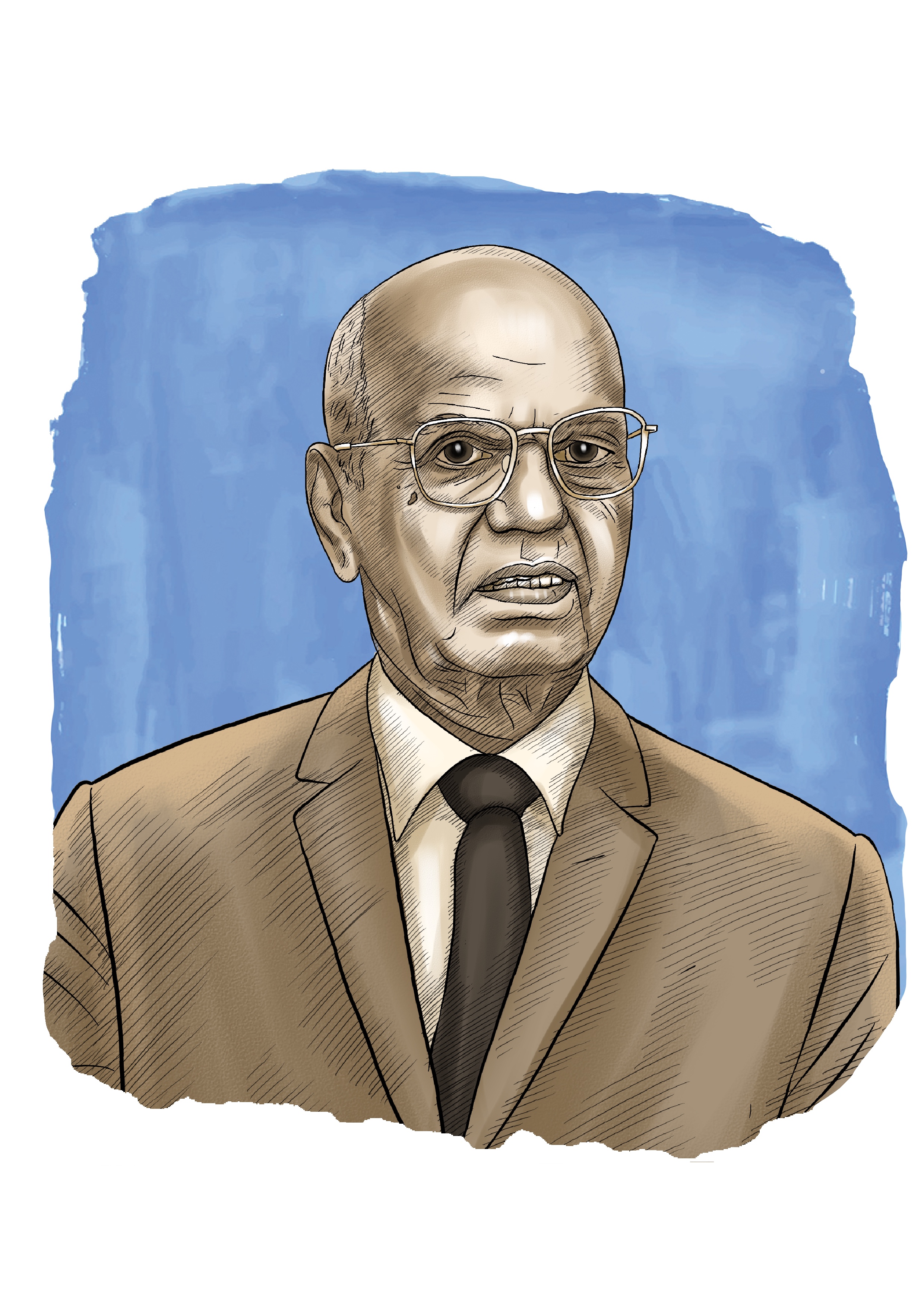
T Balaram
A beautiful player of the beautiful game.
(30 November 1936 – 16 February 2023)
No single story could capture the triumph and tragedy of T Balaram, but this one, from his early days, comes close: it is the story of how he acquired his first pair of boots.
At the time, football boots were a luxury that Balaram’s family couldn’t afford. Determined to play, young Balaram sought out a cobbler who promised he could fashion a pair using old police boots.
Balaram found a traffic policeman and pestered him for an old pair of boots. Although he tried to shoo Balram away, the cop finally gave up and gave him an old pair of boots.
Overjoyed, Balaram took the worn boots to the cobbler, who asked for the precious sum of two rupees to repair them and make them suitable for football. Balram lied to his mother, saying he needed the money for textbooks.
With his newly patched-up boots, Tulsidas Balaram soon made a name for himself on the local football scene. By the time he was 19, his talent had caught the attention of legendary Indian coach Syed Abdul Rahim during a local tournament in Secunderabad.
Tulsidas Balaram, who breathed his last in 2023, was the last surviving member of Indian football's golden trinity, the other two being Chuni Goswami and PK Banerjee. Known for his versatility, Balaram could fit in any position, pre-empting the 'Total football' that would be made famous by the Dutch teams of the 1970s.
A master of ball control, he could score from almost any angle on the pitch. What makes these facts even more incredible is that Balaram did not get the chance to kick a proper football till he was nine years old.
The man who would terrorise defences in his pomp spent his childhood in a mud hut with a large family. Like many poor families, they struggled to make ends meet: his brother worked in a sub-depot that supplied vehicles to the army.
Indian coach Syed Abdul Rahim, who had spotted him, parachuted him into the 1956 Olympics squad, where he played only one match: in the semi-finals that India lost 4-1.
Although he was from Andhra Pradesh, he won three of his four Santosh trophies while playing for Bengal, with the last one coming as captain of the team. Although he almost played for Mohammedan Sporting, it was another club where he would make his name: East Bengal.
From then on, he won almost all honours he competed for: the IFA Shield, the Durand Cup,the Rovers Shield, and at the national level, a memorable gold at the Asian Games in 1962.
Then, at his peak, he was struck down.
In 1963, he was diagnosed with pleurisy - a condition that causes inflammation of the tissue that lines the chest cavity and the lungs. It made the simple act of playing football a life-threatening risk for Balaram, one that he couldn't take. So, he retired at the young age of 27, when a footballer usually enters his peak.
Balaram settled down in his adopted home of Kolkata, and never returned home to Secunderabad. He took up coaching and mentored upcoming footballers. Later in life, he became a fixture in Kolkata, adored by the locals for his achievements and humble demeanour.
The life and times of T Balaram are worthy of a Hollywood film, but no film could capture the greatness of the man. Rising from sheer poverty to becoming one of the best to play the game, to dealing with the shock and sorrow of suddenly being unable to do the one thing he loved the most, Balaram's life contains multitudes.
-
T Balaram
A beautiful player of the beautiful game.
(30 November 1936 – 16 February 2023)
No single story could capture the triumph and tragedy of T Balaram, but this one, from his early days, comes close: it is the story of how he acquired his first pair of boots.
At the time, football boots were a luxury that Balaram’s family couldn’t afford. Determined to play, young Balaram sought out a cobbler who promised he could fashion a pair using old police boots.
Balaram found a traffic policeman and pestered him for an old pair of boots. Although he tried to shoo Balram away, the cop finally gave up and gave him an old pair of boots.
Overjoyed, Balaram took the worn boots to the cobbler, who asked for the precious sum of two rupees to repair them and make them suitable for football. Balram lied to his mother, saying he needed the money for textbooks.
With his newly patched-up boots, Tulsidas Balaram soon made a name for himself on the local football scene. By the time he was 19, his talent had caught the attention of legendary Indian coach Syed Abdul Rahim during a local tournament in Secunderabad.
Tulsidas Balaram, who breathed his last in 2023, was the last surviving member of Indian football's golden trinity, the other two being Chuni Goswami and PK Banerjee. Known for his versatility, Balaram could fit in any position, pre-empting the 'Total football' that would be made famous by the Dutch teams of the 1970s.
A master of ball control, he could score from almost any angle on the pitch. What makes these facts even more incredible is that Balaram did not get the chance to kick a proper football till he was nine years old.
The man who would terrorise defences in his pomp spent his childhood in a mud hut with a large family. Like many poor families, they struggled to make ends meet: his brother worked in a sub-depot that supplied vehicles to the army.
Indian coach Syed Abdul Rahim, who had spotted him, parachuted him into the 1956 Olympics squad, where he played only one match: in the semi-finals that India lost 4-1.
Although he was from Andhra Pradesh, he won three of his four Santosh trophies while playing for Bengal, with the last one coming as captain of the team. Although he almost played for Mohammedan Sporting, it was another club where he would make his name: East Bengal.
From then on, he won almost all honours he competed for: the IFA Shield, the Durand Cup,the Rovers Shield, and at the national level, a memorable gold at the Asian Games in 1962.
Then, at his peak, he was struck down.
In 1963, he was diagnosed with pleurisy - a condition that causes inflammation of the tissue that lines the chest cavity and the lungs. It made the simple act of playing football a life-threatening risk for Balaram, one that he couldn't take. So, he retired at the young age of 27, when a footballer usually enters his peak.
Balaram settled down in his adopted home of Kolkata, and never returned home to Secunderabad. He took up coaching and mentored upcoming footballers. Later in life, he became a fixture in Kolkata, adored by the locals for his achievements and humble demeanour.
The life and times of T Balaram are worthy of a Hollywood film, but no film could capture the greatness of the man. Rising from sheer poverty to becoming one of the best to play the game, to dealing with the shock and sorrow of suddenly being unable to do the one thing he loved the most, Balaram's life contains multitudes.
- Science & Tech
- Sports
- Entertainment
Science & Tech
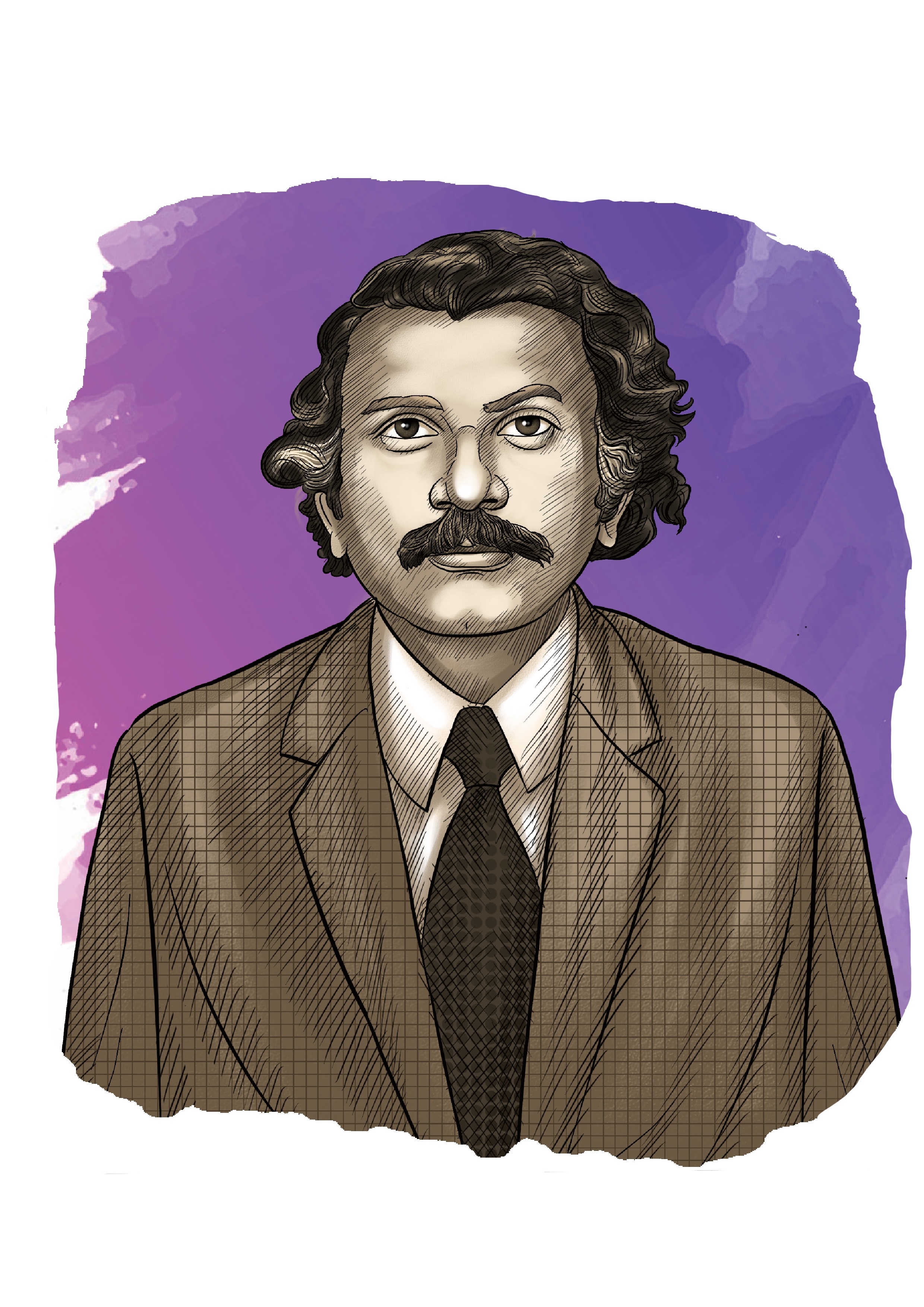
Venkataraman Radhakrishnan
A Sailor Among the Stars
(18 May 1929- 3 March 2011)
If ever an Indian was born into circumstances that encouraged him to be a great scientist, it was Venkataraman Radhakrishnan.
When he was just a year old, his father, the immortal Chandrasekhara Venkata Raman, was awarded the Nobel Prize in Physics, the first Asian and non-white person to be honoured thus. A life full of discovery and adventure awaited the young boy. He may have been overshadowed in the public eye by a cousin of his — Subrahmanyan Chandrasekhar, who was also a Nobel laureate — but that did not mean he lived a life any less extraordinary.
To call Professor Radhakrishnan a scientist would be less accurate than calling him a Renaissance man. After all, how many scientists built and learnt to operate lightweight aircraft and sailboats? That was when he was not off hang gliding, of course. Once, he even sailed across the world’s largest body of water: the Pacific Ocean.
The man who would universally be known by the affectionate nickname ‘Rad’, was a rarity among his contemporaries. While his peers collected academic degrees as a hobby, Rad would get by with a simple bachelor’s degree (he would get an honorary doctorate in the 1990s). It was no barrier to his success. His paper measuring the polarisation swing of the Vela pulsar, (a pulsar is a highly magnetised rotating neutron star that emits beams of electromagnetic radiation out of its magnetic poles.) gave birth to the widely used magnetic pole model for pulsar radio emission. The paper is considered a classic today.
In the 1950s, he moved to Sweden, giving three years of his life and taking away experience and the knowledge of fluent Swedish. In the 1970s, he decided to return to his roots, joining the Raman Research Institute in Bangalore. It needed some leadership after its founder — his father — had passed away. He played a major role in revitalising the place, making it respectable again in the eyes of the scientific community.
It is easy to forget the scientist at the core of this man who wore many hats at once. But it is important to remember that he was one of the most respected radio astronomers in the world, with path-breaking work to show for it. He contributed original work on the subject of pulsars and interstellar hydrogen, among other things. This was also seen in the many roles he played in scientific organisations from the United States to Europe to Australia.
He did critical work at home too, helping the Tata Institute of Fundamental Research (TIFR), one of the nation’s leading research institutes, to develop a radio telescope. Some of the components of the telescope were built at his beloved Raman Research Institute in Bengaluru.
Above all, ‘Rad’ understood what science was all about, and worked hard to promote the scientific spirit. He was beloved by colleagues and collaborators for his graciousness and his efforts to take everyone, even the least, along on this wonderful journey. A member of the Royal Swedish Academy of Sciences, he had no shortage of admirers at home or abroad.
In the end, Rad proved that he was no ordinary mortal. At the age of 82, six months before his passing, he announced that he would circumnavigate the world solo, in a yacht named after his wife. It was not meant to be, but the radical Rad will always be a cosmic voyager
-
Venkataraman Radhakrishnan
A Sailor Among the Stars
(18 May 1929- 3 March 2011)
If ever an Indian was born into circumstances that encouraged him to be a great scientist, it was Venkataraman Radhakrishnan.
When he was just a year old, his father, the immortal Chandrasekhara Venkata Raman, was awarded the Nobel Prize in Physics, the first Asian and non-white person to be honoured thus. A life full of discovery and adventure awaited the young boy. He may have been overshadowed in the public eye by a cousin of his — Subrahmanyan Chandrasekhar, who was also a Nobel laureate — but that did not mean he lived a life any less extraordinary.
To call Professor Radhakrishnan a scientist would be less accurate than calling him a Renaissance man. After all, how many scientists built and learnt to operate lightweight aircraft and sailboats? That was when he was not off hang gliding, of course. Once, he even sailed across the world’s largest body of water: the Pacific Ocean.
The man who would universally be known by the affectionate nickname ‘Rad’, was a rarity among his contemporaries. While his peers collected academic degrees as a hobby, Rad would get by with a simple bachelor’s degree (he would get an honorary doctorate in the 1990s). It was no barrier to his success. His paper measuring the polarisation swing of the Vela pulsar, (a pulsar is a highly magnetised rotating neutron star that emits beams of electromagnetic radiation out of its magnetic poles.) gave birth to the widely used magnetic pole model for pulsar radio emission. The paper is considered a classic today.
In the 1950s, he moved to Sweden, giving three years of his life and taking away experience and the knowledge of fluent Swedish. In the 1970s, he decided to return to his roots, joining the Raman Research Institute in Bangalore. It needed some leadership after its founder — his father — had passed away. He played a major role in revitalising the place, making it respectable again in the eyes of the scientific community.
It is easy to forget the scientist at the core of this man who wore many hats at once. But it is important to remember that he was one of the most respected radio astronomers in the world, with path-breaking work to show for it. He contributed original work on the subject of pulsars and interstellar hydrogen, among other things. This was also seen in the many roles he played in scientific organisations from the United States to Europe to Australia.
He did critical work at home too, helping the Tata Institute of Fundamental Research (TIFR), one of the nation’s leading research institutes, to develop a radio telescope. Some of the components of the telescope were built at his beloved Raman Research Institute in Bengaluru.
Above all, ‘Rad’ understood what science was all about, and worked hard to promote the scientific spirit. He was beloved by colleagues and collaborators for his graciousness and his efforts to take everyone, even the least, along on this wonderful journey. A member of the Royal Swedish Academy of Sciences, he had no shortage of admirers at home or abroad.
In the end, Rad proved that he was no ordinary mortal. At the age of 82, six months before his passing, he announced that he would circumnavigate the world solo, in a yacht named after his wife. It was not meant to be, but the radical Rad will always be a cosmic voyager
- Science & Tech
- Entertainment
Science & Tech
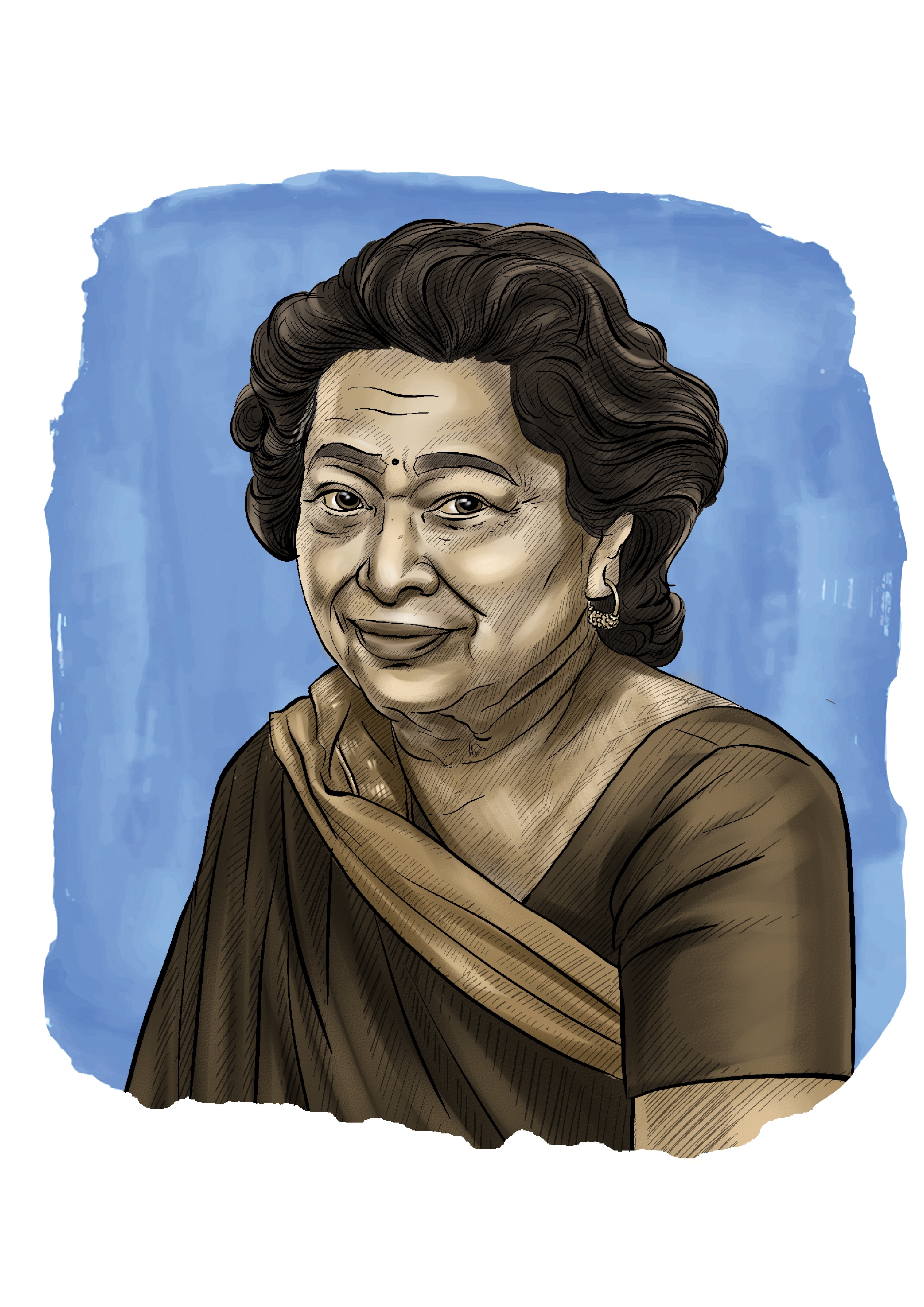
Shakuntala Devi
The Human Calculator
(4 November 1929 - 21 April 2013)
Children under the age of six can barely do basic arithmetic. In this context, the event of a young girl doing lightning-quick mental maths, giving out answers in mere seconds was narrated by those who witnessed it as being near magical. This young girl was Shakuntala Devi, born 4 November 1929.
While her mythological namesake was the daughter of the celebrated Sage Vishwamitra, Shakuntala Devi could not lay claim to a prestigious lineage of any kind. The earthly lass was the daughter of a man who worked as a trapeze artist, a lion tamer, a tightrope walker and a magician. With no formal education, Devi did not pick up what other school-going children of her age were learning. However, she was blessed with a brilliant mind that was faster than the computers available at the time—she beat UNIVAC, the first digital computer.
Her peculiar ability was revealed to her father when he engaged in card tricks with her. He realised that Devi won not by cheating, but through her knack for remembering the cards and calculating probability. This quickly turned into the Shakuntala Show where her father put her up as the exhibit. Devi, like her father, was rebellious by nature. While he rebelled against his family to work in a circus, she would later rebel against her father, who tried to shackle her into a life as a performer.
Devi’s journey into fame started when she was just six. From displaying her skills at the University of Mysore, she moved to Europe and New York, where the presentation of her unerring calculations drew wide applause. She astounded people wherever she went. In an interview with the BBC in 1950, Devi answered a question posed to her by broadcast journalist Leslie Mitchell and, in a shocking turn of events, was declared to be wrong for the first time ever. After verification of the answer, however, Mitchell had to admit that ‘she was right and the BBC wrong!’ There was absolutely no room for doubt about her ability then. Devi was aptly called the “Human Computer” after this interview. One would think that such a title would be a great honour, but not for Devi! She believed that the human mind was far more capable than a computer and did not like being compared to one.
Many questioned her genius, and asked how she did it, but Devi had no answer. All she could say was that it was ‘God’s gift. A divine ability.’ This was perhaps true because there was no one back then, nor has there been anyone like her since, who can do what she did.
Mathematics is deemed difficult and dry, and not many like it, but Devi found joy in numbers. Arthur Jensen, a researcher who worked with her, described her as being ‘alert, extroverted, affable and articulate’ while her daughter, Anupama Banerji, fondly remembers her as being a fun person who had a tendency for showmanship even in a subject that people found boring.
While Devi is understandably most well known for her unique computer-like brain, she was also just a woman who enjoyed sarees, danced to Fred Astaire songs, struggled with the demands of motherhood, and even had a parallel career as an astrologist. She wrote many books on various subjects. Mathematics, of course, dominated her writing, but she also wrote cookbooks, puzzle books, and works on astrology.
Devi died on 21 April 2013. Her daughter, Anupama, narrated her mother’s life to director Anu Menon who created the film Shakuntala (2020) for the silver screen.
While Devi might be known for her mathematical genius, it is important to remember that her life was more than the sum of the numbers she calculated.
-
Shakuntala Devi
The Human Calculator.
(4 November 1929 - 21 April 2013)
Children under the age of six can barely do basic arithmetic. In this context, the event of a young girl doing lightning-quick mental maths, giving out answers in mere seconds was narrated by those who witnessed it as being near magical. This young girl was Shakuntala Devi, born 4 November 1929.
While her mythological namesake was the daughter of the celebrated Sage Vishwamitra, Shakuntala Devi could not lay claim to a prestigious lineage of any kind. The earthly lass was the daughter of a man who worked as a trapeze artist, a lion tamer, a tightrope walker and a magician. With no formal education, Devi did not pick up what other school-going children of her age were learning. However, she was blessed with a brilliant mind that was faster than the computers available at the time—she beat UNIVAC, the first digital computer.
Her peculiar ability was revealed to her father when he engaged in card tricks with her. He realised that Devi won not by cheating, but through her knack for remembering the cards and calculating probability. This quickly turned into the Shakuntala Show where her father put her up as the exhibit. Devi, like her father, was rebellious by nature. While he rebelled against his family to work in a circus, she would later rebel against her father, who tried to shackle her into a life as a performer.
Devi’s journey into fame started when she was just six. From displaying her skills at the University of Mysore, she moved to Europe and New York, where the presentation of her unerring calculations drew wide applause. She astounded people wherever she went. In an interview with the BBC in 1950, Devi answered a question posed to her by broadcast journalist Leslie Mitchell and, in a shocking turn of events, was declared to be wrong for the first time ever. After verification of the answer, however, Mitchell had to admit that ‘she was right and the BBC wrong!’ There was absolutely no room for doubt about her ability then. Devi was aptly called the “Human Computer” after this interview. One would think that such a title would be a great honour, but not for Devi! She believed that the human mind was far more capable than a computer and did not like being compared to one.
Many questioned her genius, and asked how she did it, but Devi had no answer. All she could say was that it was ‘God’s gift. A divine ability.’ This was perhaps true because there was no one back then, nor has there been anyone like her since, who can do what she did.
Mathematics is deemed difficult and dry, and not many like it, but Devi found joy in numbers. Arthur Jensen, a researcher who worked with her, described her as being ‘alert, extroverted, affable and articulate’ while her daughter, Anupama Banerji, fondly remembers her as being a fun person who had a tendency for showmanship even in a subject that people found boring.
While Devi is understandably most well known for her unique computer-like brain, she was also just a woman who enjoyed sarees, danced to Fred Astaire songs, struggled with the demands of motherhood, and even had a parallel career as an astrologist. She wrote many books on various subjects. Mathematics, of course, dominated her writing, but she also wrote cookbooks, puzzle books, and works on astrology.
Devi died on 21 April 2013. Her daughter, Anupama, narrated her mother’s life to director Anu Menon who created the film Shakuntala (2020) for the silver screen.
While Devi might be known for her mathematical genius, it is important to remember that her life was more than the sum of the numbers she calculated.
- Sports
- Entertainment & Culture
Sports
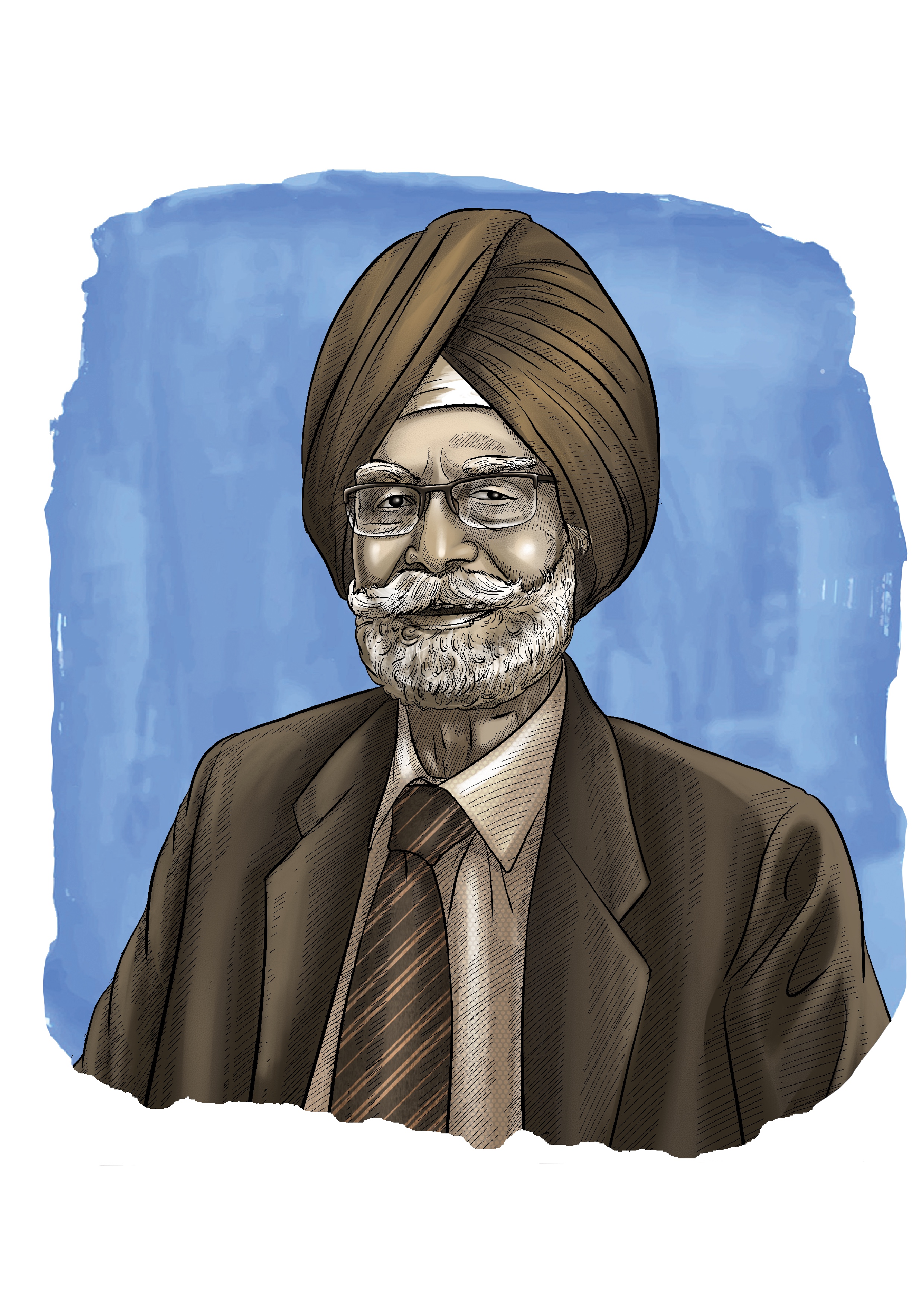
Balbir Singh Sr.
The Golden Yardstick
(31 Dec 1923 - 25 May 2020)
As a youngster, Balbir Singh Sr.’s fate was sealed by imperial fiat! Sir John Bennett, then Inspector-General of the Punjab Police, was hell-bent on signing up Singh for the Punjab Police team, also offering him the post of Assistant Sub-Inspector as part of the bargain. Singh had no desire to be a part of a cruel arm of the state, particularly one that had incarcerated his own father and his comrades for daring to speak out in favour of their nation’s liberty. The oppressor’s yoke was trying to force itself upon him and lay claim to his talents. Singh demurred, and joined the Central Public Works Department hockey team instead.
One day, while perusing the dailies, Sir John discovered that the player whom he desired badly was playing hockey in New Delhi. Not to put up with this slight to an officer of His Majesty’s court, Sir Bennett immediately dispatched his minions, to arrest and bring Singh back to Punjab. He was given two choices—play hockey for the Punjab Police or suffer the rigours of prison. So, it came to be that one of the brightest stars in the constellation of Indian hockey found himself serving a sentence on the field, stick in hand, with furtive eyes always on the lookout for the ball.
Balbir Singh Sr., one of the most celebrated figures in Indian hockey, passed away on 25 May 2020 at the age of 96. His illustrious career spanned several decades.
Balbir Singh Sr. was born in the small Punjab town of Haripur Khalsa. Once he started playing competitive hockey, he quickly rose through the ranks, ultimately representing India on the international stage. Singh made his Olympic debut in the 1948 London Games, where his skills as a forward helped India secure the gold medal. He scored two goals in the final against Great Britain in a significant victory that came shortly after India's independence.
Singh's success in the Olympics continued in the 1952 Helsinki Games, where he played a pivotal role in India's gold medal win. In the final against the Netherlands, Singh scored five goals, setting a record for the most goals scored by an individual in an Olympic final, a record that still stands.
He led the Indian team in the 1956 Melbourne Olympics. Despite a fractured right hand, he played through the pain to guide India to a 1-0 victory over Pakistan in the final, securing his third consecutive Olympic gold medal. This victory was particularly poignant as it marked India's sixth consecutive Olympic gold in hockey.
After he hung up his boots, Singh was the manager of the Indian team that won the bronze medal at the inaugural Hockey World Cup in 1971, and later in 1975, when India won the tournament. His tactical acumen was instrumental in these achievements.
During the 1952 Olympics, Singh credited his fellow players for their support and emphasised the importance of teamwork over individual achievements. This attitude endeared him to fans and fellow players alike, earning him respect both on and off the field.
Singh also nurtured future generations of hockey players. He frequently visited schools and training camps, sharing his knowledge and inspiring young athletes.
Balbir Singh Sr shaped the contours of Indian hockey. The statistical heft of his achievements is immense. He is survived by his family, including his grandson Kabir. His legacy will continue to inspire and guide future generations of hockey players.
-
Balbir Singh Sr.
The Golden Yardstick.
(31 Dec 1923 - 25 May 2020)
As a youngster, Balbir Singh Sr.’s fate was sealed by imperial fiat! Sir John Bennett, then Inspector-General of the Punjab Police, was hell-bent on signing up Singh for the Punjab Police team, also offering him the post of Assistant Sub-Inspector as part of the bargain. Singh had no desire to be a part of a cruel arm of the state, particularly one that had incarcerated his own father and his comrades for daring to speak out in favour of their nation’s liberty. The oppressor’s yoke was trying to force itself upon him and lay claim to his talents. Singh demurred, and joined the Central Public Works Department hockey team instead.
One day, while perusing the dailies, Sir John discovered that the player whom he desired badly was playing hockey in New Delhi. Not to put up with this slight to an officer of His Majesty’s court, Sir Bennett immediately dispatched his minions, to arrest and bring Singh back to Punjab. He was given two choices—play hockey for the Punjab Police or suffer the rigours of prison. So, it came to be that one of the brightest stars in the constellation of Indian hockey found himself serving a sentence on the field, stick in hand, with furtive eyes always on the lookout for the ball.
Balbir Singh Sr., one of the most celebrated figures in Indian hockey, passed away on 25 May 2020 at the age of 96. His illustrious career spanned several decades.
Balbir Singh Sr. was born in the small Punjab town of Haripur Khalsa. Once he started playing competitive hockey, he quickly rose through the ranks, ultimately representing India on the international stage. Singh made his Olympic debut in the 1948 London Games, where his skills as a forward helped India secure the gold medal. He scored two goals in the final against Great Britain in a significant victory that came shortly after India's independence.
Singh's success in the Olympics continued in the 1952 Helsinki Games, where he played a pivotal role in India's gold medal win. In the final against the Netherlands, Singh scored five goals, setting a record for the most goals scored by an individual in an Olympic final, a record that still stands.
He led the Indian team in the 1956 Melbourne Olympics. Despite a fractured right hand, he played through the pain to guide India to a 1-0 victory over Pakistan in the final, securing his third consecutive Olympic gold medal. This victory was particularly poignant as it marked India's sixth consecutive Olympic gold in hockey.
After he hung up his boots, Singh was the manager of the Indian team that won the bronze medal at the inaugural Hockey World Cup in 1971, and later in 1975, when India won the tournament. His tactical acumen was instrumental in these achievements.
During the 1952 Olympics, Singh credited his fellow players for their support and emphasised the importance of teamwork over individual achievements. This attitude endeared him to fans and fellow players alike, earning him respect both on and off the field.
Singh also nurtured future generations of hockey players. He frequently visited schools and training camps, sharing his knowledge and inspiring young athletes.
Balbir Singh Sr shaped the contours of Indian hockey. The statistical heft of his achievements is immense. He is survived by his family, including his grandson Kabir. His legacy will continue to inspire and guide future generations of hockey players.
- Sports
- Business
Sports
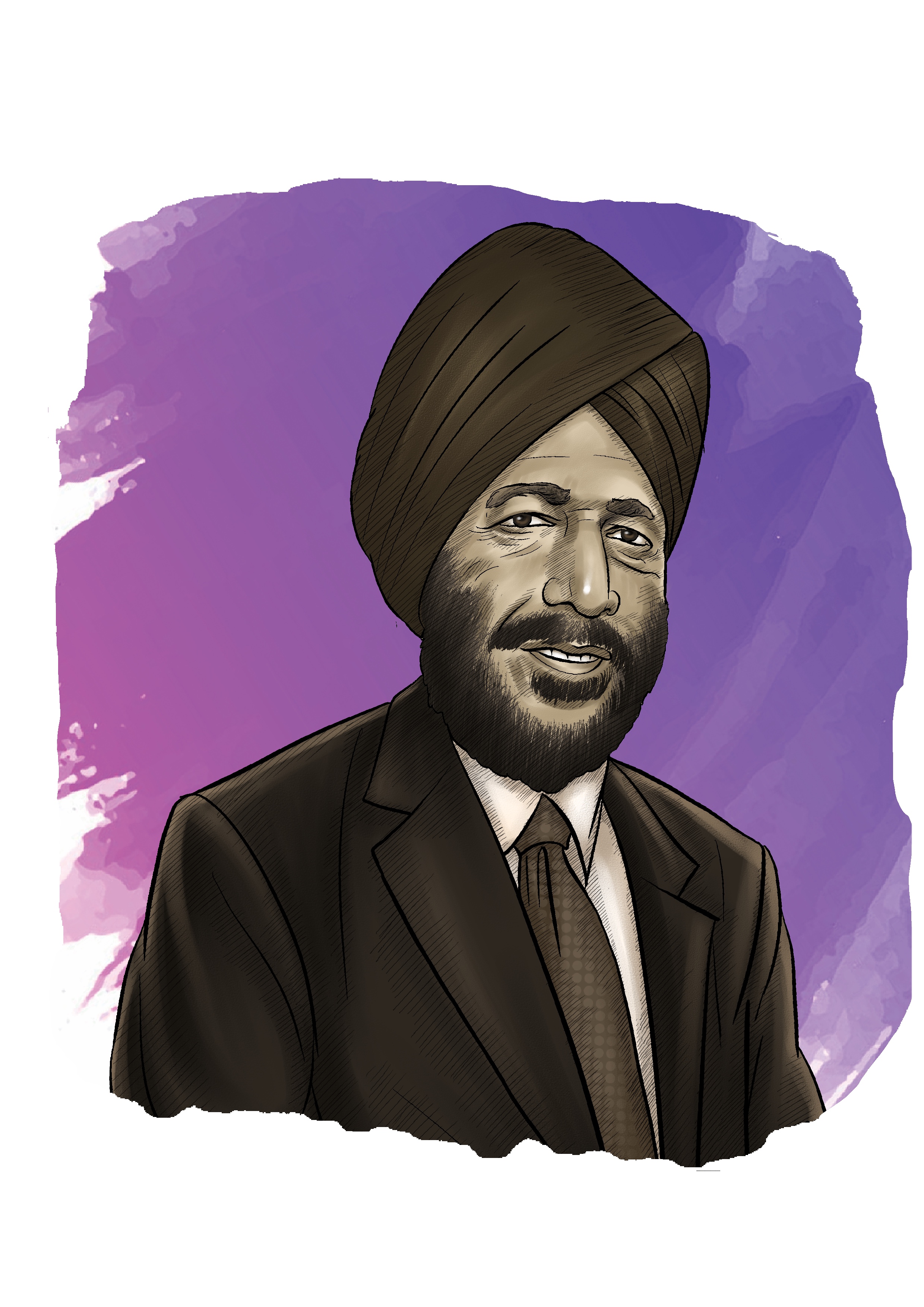
Milkha Singh
The uncrowned king of the track.
(November 1929 – 18 June 2021)
During the upheaval of Partition, a young Sikh boy watched with horror as his father was killed. The last words he heard were: “Bhaag, MIlkha, Bhaag!”
Run he did, all the way to becoming the greatest runner that India had ever seen. Milkha Singh was India’s first individual star athlete, but he was also much more than that.
Born in Govindpura, Punjab, the horrors of Partition marked a traumatic beginning for him. Although his passport listed his date of birth as November 1932, in his autobiography he says he didn’t actually know the date. Separated from his family during the upheaval, he fled to Delhi, carrying the scars of loss and uncertainty.
He worked at a roadside restaurant before joining the Indian army. Seeking solace and purpose, he found his calling in athletics. His early years were spent in obscurity, but determination drove him to the tracks, where he would ultimately carve his name in golden letters.
At his first Olympics in 1956, the young Milkha’s chance meeting with champion Charles Jenkins proved to be a turning point. He returned to India determined to turn himself into “a running machine”.
Singh's rise in athletics was meteoric. He burst onto the international scene at the 1958 Asian Games in Tokyo, where he clinched the gold medal in the 400 metres. Until 2014, he was the only Indian male to have an individual athletics Commonwealth Games gold.
The 1960 Rome Olympics would bring Milkha the highest of highs, as well as the lowest of lows. In one of the greatest races that the Olympics has ever seen, Otis Davis of the US clinched gold, beating Germany’s Carl Kaufmann by one-hundredth of a second. Malcom Spence of South Africa finished third with a time of 45.6 seconds.
Competing against the world's best, Milkha narrowly missed out on a medal, finishing fourth in a race that would haunt him for years. His timing of 45.73s was a national record that stood for 40 years. Later, he called it the worst memory of his life, after the death of his parents.
He did not let that moment drag him down; he went on to secure three gold medals at the 1962 Asian Games—two in individual events and one as part of the relay team.
In 1960, he did the unthinkable: making a Pakistani leader praise an Indian athlete. After seeing Pakistan’s champion sprinter destroyed by Milkha in a race, an awestruck Ayub Khan described Milkha as ‘the Flying Sikh’.
Milkha’s training regimen was famously hard: he ran barefoot to develop his speed, living up to the belief that hard work and perseverance were paramount to success. His training sessions, often involving gruelling runs at dawn, became the stuff of legends.
Off the track, Milkha's humility and kindness endeared him to many. He remained grounded despite his fame, and often attributed his success to the love and support of his family and his coach, who nurtured his talent. His marriage to the athlete Nirmal Kaur added another dimension to his life; together, they shared a deep love for sports (she was a national level volleyball player) and a commitment to promoting athletics in India.
As Singh aged, his focus shifted towards inspiring the next generation. He dedicated his later years to mentoring young athletes and promoting sports across the country. He established Milkha’s Charitable Trust, aimed at nurturing talent in athletics and providing opportunities for underprivileged youth showcased his commitment to giving back to the sport that had given him so much. His son, Jeev Milkha Singh, is a professional golfer who became the first Indian to join the European Tour, continuing his father’s sporting legacy.
Milkha passed away on 18 June 2021, succumbing to complications related to COVID-19. His spirit lives on through the millions of Indians who learned from him to never give up.
-
Milkha Singh
The uncrowned king of the track.
(November 1929 – 18 June 2021)
During the upheaval of Partition, a young Sikh boy watched with horror as his father was killed. The last words he heard were: “Bhaag, MIlkha, Bhaag!”
Run he did, all the way to becoming the greatest runner that India had ever seen. Milkha Singh was India’s first individual star athlete, but he was also much more than that.
Born in Govindpura, Punjab, the horrors of Partition marked a traumatic beginning for him. Although his passport listed his date of birth as November 1932, in his autobiography he says he didn’t actually know the date. Separated from his family during the upheaval, he fled to Delhi, carrying the scars of loss and uncertainty.
He worked at a roadside restaurant before joining the Indian army. Seeking solace and purpose, he found his calling in athletics. His early years were spent in obscurity, but determination drove him to the tracks, where he would ultimately carve his name in golden letters.
At his first Olympics in 1956, the young Milkha’s chance meeting with champion Charles Jenkins proved to be a turning point. He returned to India determined to turn himself into “a running machine”.
Singh's rise in athletics was meteoric. He burst onto the international scene at the 1958 Asian Games in Tokyo, where he clinched the gold medal in the 400 metres. Until 2014, he was the only Indian male to have an individual athletics Commonwealth Games gold.
The 1960 Rome Olympics would bring Milkha the highest of highs, as well as the lowest of lows. In one of the greatest races that the Olympics has ever seen, Otis Davis of the US clinched gold, beating Germany’s Carl Kaufmann by one-hundredth of a second. Malcom Spence of South Africa finished third with a time of 45.6 seconds.
Competing against the world's best, Milkha narrowly missed out on a medal, finishing fourth in a race that would haunt him for years. His timing of 45.73s was a national record that stood for 40 years. Later, he called it the worst memory of his life, after the death of his parents.
He did not let that moment drag him down; he went on to secure three gold medals at the 1962 Asian Games—two in individual events and one as part of the relay team.
In 1960, he did the unthinkable: making a Pakistani leader praise an Indian athlete. After seeing Pakistan’s champion sprinter destroyed by Milkha in a race, an awestruck Ayub Khan described Milkha as ‘the Flying Sikh’.
Milkha’s training regimen was famously hard: he ran barefoot to develop his speed, living up to the belief that hard work and perseverance were paramount to success. His training sessions, often involving gruelling runs at dawn, became the stuff of legends.
Off the track, Milkha's humility and kindness endeared him to many. He remained grounded despite his fame, and often attributed his success to the love and support of his family and his coach, who nurtured his talent. His marriage to the athlete Nirmal Kaur added another dimension to his life; together, they shared a deep love for sports (she was a national level volleyball player) and a commitment to promoting athletics in India.
As Singh aged, his focus shifted towards inspiring the next generation. He dedicated his later years to mentoring young athletes and promoting sports across the country. He established Milkha’s Charitable Trust, aimed at nurturing talent in athletics and providing opportunities for underprivileged youth showcased his commitment to giving back to the sport that had given him so much. His son, Jeev Milkha Singh, is a professional golfer who became the first Indian to join the European Tour, continuing his father’s sporting legacy.
Milkha passed away on 18 June 2021, succumbing to complications related to COVID-19. His spirit lives on through the millions of Indians who learned from him to never give up.
- Science & Tech
- Business
- Entertainment & Culture
Science & Tech
APJ Abdul Kalam
The man who ignited minds.
(15 October 1931 – 27 July 2015)
In 1979, ISRO's project director was overseeing a satellite launch. Minutes before lift-off, the computer detected an error and advised cancellation. The director, however, was determined to see his mission through. Throwing caution to the wind, he decided to bypass the computer’s warning. The consequences of this ill-advised decision were felt soon after, as, instead of following its planned trajectory to space, the satellite took a detour and dove into the depths of the Bay of Bengal.
It was a moment of shame, as the hubris of the director had led to this costly and unnecessary failure. What the director did thereafter, though, is what elevated him beyond the ordinary. He admitted that he had made a mistake. He examined his own faults, and was given a reprieve. ISRO Chief Satish Dhawan stood by him, asserting with confidence that the agency would shrug off this setback, rebound, and achieve its objective within the year. This touch of inspired leadership found its way to the project director as well—a humble man from the southern reaches of the nation, Rameswaram, where, as a child, he used to collect newspapers discarded from the Dhanushkodi Mail train and sell them to the town’s people. He is today remembered as one of India’s most beloved statesmen and scientists. He was the Missile Man of India, Dr. APJ Abdul Kalam.
Dr. Kalam passed away on July 27, 2015, at the age of 83. His remarkable journey from a small village in Tamil Nadu, to becoming a national icon and a key architect of India's space and missile programs, left an indelible mark on the nation.
Kalam's early life was characterized by humility and perseverance. He studied physics and aerospace engineering and later joined the Defence Research and Development Organisation (DRDO) and the Indian Space Research Organisation (ISRO). His role in heading the Guided Missile Development Programme to design missiles like the Prithvi, Agni, Vayu, Aakash, and Nag earned him the well-known epithet ‘The Missile Man’ of India.
Kalam played a pivotal role in the Pokhran-II tests in 1998, which established India as a nuclear power. In 2002, he was elected as the 11th President of India. He was affectionately known as the "People's President" for his accessible and humble approach. During his presidency, he promoted the vision of India becoming a developed nation by 2020, focusing on education and youth empowerment.
His unexpected demise occurred while he was delivering a lecture at the Indian Institute of Management Shillong.
On July 18, just a week before his passing, Kalam met Rev. Fr. Ladislaus Chinnadurai, his former Physics and Thermodynamics professor from St Joseph’s College, Tiruchi, where Kalam studied from 1950 to 1954. Their 15-minute meeting was memorable, with the 94-year-old Chinnadurai expressing joy at seeing Kalam again. He reminisced about Kalam's brilliance as a student and recalled how they would have three-hour Physics classes together every day.
It may be of some solace that Kalam's final moments were spent doing what he loved most—sharing knowledge and motivating students. Thereafter, IIM Shillong established an annual lecture in Dr. Kalam’s memory, hoping to instil his principles and ethos in its students.
During his life, Kalam received numerous honours, including the Bharat Ratna, India's highest civilian award. His books, such as "Wings of Fire" and "Ignited Minds," continue to inspire millions around the world.
APJ Abdul Kalam's legacy is one of scientific innovation, visionary leadership, and profound humility. His life and work remain a beacon of inspiration, demonstrating the power of dreams, determination, and the relentless pursuit of excellence.
-
APJ Abdul Kalam
The man who ignited minds.
(15 October 1931 – 27 July 2015)
In 1979, ISRO's project director was overseeing a satellite launch. Minutes before lift-off, the computer detected an error and advised cancellation. The director, however, was determined to see his mission through. Throwing caution to the wind, he decided to bypass the computer’s warning. The consequences of this ill-advised decision were felt soon after, as, instead of following its planned trajectory to space, the satellite took a detour and dove into the depths of the Bay of Bengal.
It was a moment of shame, as the hubris of the director had led to this costly and unnecessary failure. What the director did thereafter, though, is what elevated him beyond the ordinary. He admitted that he had made a mistake. He examined his own faults, and was given a reprieve. ISRO Chief Satish Dhawan stood by him, asserting with confidence that the agency would shrug off this setback, rebound, and achieve its objective within the year. This touch of inspired leadership found its way to the project director as well—a humble man from the southern reaches of the nation, Rameswaram, where, as a child, he used to collect newspapers discarded from the Dhanushkodi Mail train and sell them to the town’s people. He is today remembered as one of India’s most beloved statesmen and scientists. He was the Missile Man of India, Dr. APJ Abdul Kalam.
Dr. Kalam passed away on July 27, 2015, at the age of 83. His remarkable journey from a small village in Tamil Nadu, to becoming a national icon and a key architect of India's space and missile programs, left an indelible mark on the nation.
Kalam's early life was characterized by humility and perseverance. He studied physics and aerospace engineering and later joined the Defence Research and Development Organisation (DRDO) and the Indian Space Research Organisation (ISRO). His role in heading the Guided Missile Development Programme to design missiles like the Prithvi, Agni, Vayu, Aakash, and Nag earned him the well-known epithet ‘The Missile Man’ of India.
Kalam played a pivotal role in the Pokhran-II tests in 1998, which established India as a nuclear power. In 2002, he was elected as the 11th President of India. He was affectionately known as the "People's President" for his accessible and humble approach. During his presidency, he promoted the vision of India becoming a developed nation by 2020, focusing on education and youth empowerment.
His unexpected demise occurred while he was delivering a lecture at the Indian Institute of Management Shillong.
On July 18, just a week before his passing, Kalam met Rev. Fr. Ladislaus Chinnadurai, his former Physics and Thermodynamics professor from St Joseph’s College, Tiruchi, where Kalam studied from 1950 to 1954. Their 15-minute meeting was memorable, with the 94-year-old Chinnadurai expressing joy at seeing Kalam again. He reminisced about Kalam's brilliance as a student and recalled how they would have three-hour Physics classes together every day.
It may be of some solace that Kalam's final moments were spent doing what he loved most—sharing knowledge and motivating students. Thereafter, IIM Shillong established an annual lecture in Dr. Kalam’s memory, hoping to instil his principles and ethos in its students.During his life, Kalam received numerous honours, including the Bharat Ratna, India's highest civilian award. His books, such as "Wings of Fire" and "Ignited Minds," continue to inspire millions around the world.
APJ Abdul Kalam's legacy is one of scientific innovation, visionary leadership, and profound humility. His life and work remain a beacon of inspiration, demonstrating the power of dreams, determination, and the relentless pursuit of excellence.
- Science & Tech
- Sports
- Business
Science & Tech
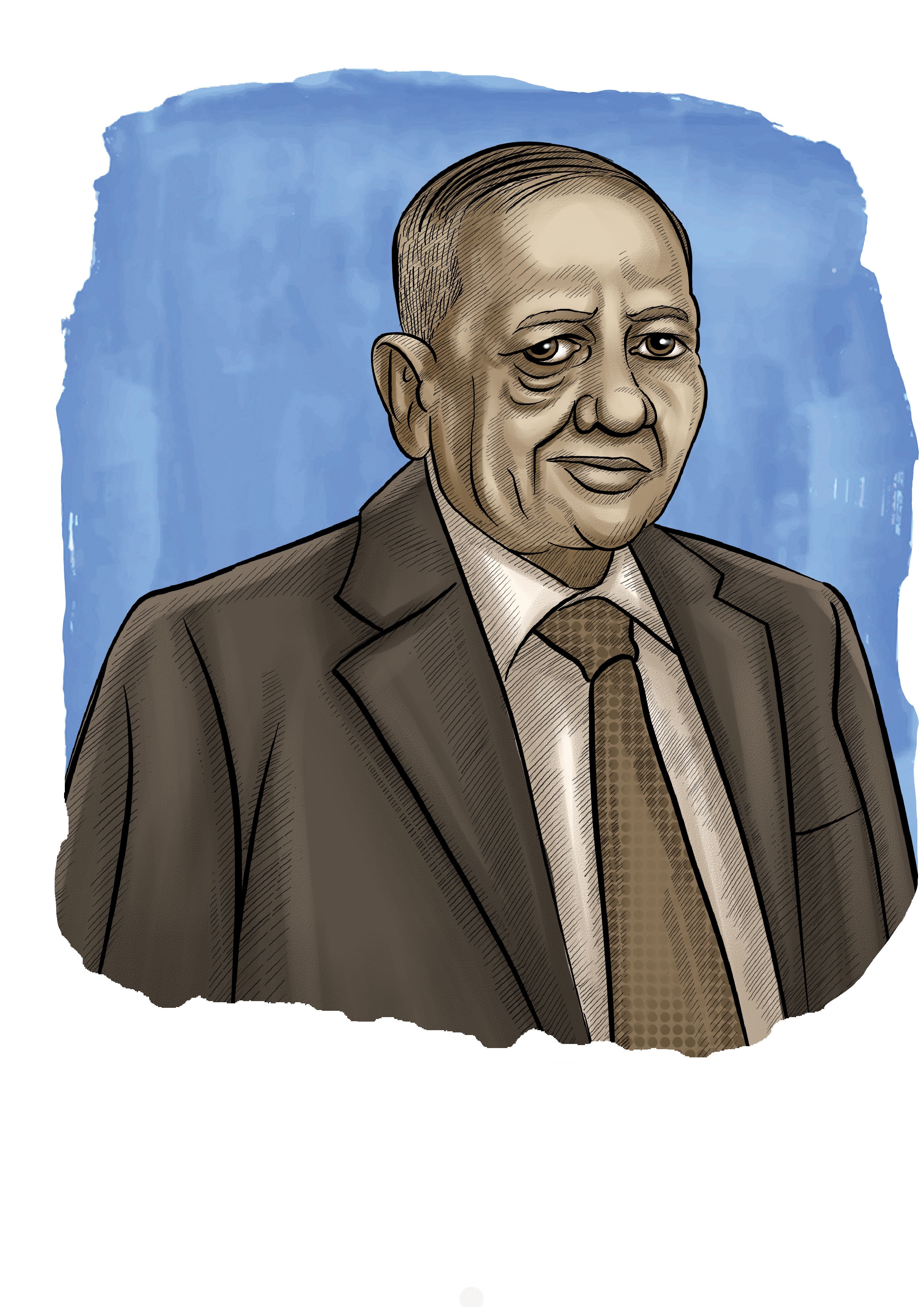
Narain Agarwal
A Story of Fire
(24 July 1941 – 15 August 2024)
Dr. Ram Narain Agarwal, a distinguished scientist and visionary known as the “Father of the Agni Missile,” passed away on 15 August 2024. He was a recipient of the Padma Shri as well as the Padma Bhushan, India's fourth and third-highest civilian honours.
Dr Agarwal served as the programme director for developing the Agni missile and as the director of ASL (Advanced Systems Laboratory) in Hyderabad.
The weight of his achievements lay lightly on Dr Agarwal's shoulders; he joked that he hardly looked like a scientist. "I could easily pass for a Marwari businessman" he once said, referring to his ancestry. Although most of his family members were traders in Jaipur, he went down the path of engineering and never looked back. He soon joined the Defence Research and Development Organisation (DRDO).
In 1983, the government of India gave its approval to the Integrated Guided Missile Development Programme (IGMDP), a brainchild of Dr APJ Abdul Kalam. The programme envisaged the development of missiles that would provide cover for India on land, water, and in the air. The missiles developed include Prithvi, Akash, Nag, Trishul, and the most famous of them all: Agni.
Dr Agarwal's career took to the skies when he took charge of the Agni missile programme in the 1980s. It would become one of the nation's most significant defence projects.
Success was hard to come by in those early days: India had been denied access to crucial technology following the Pokhran nuclear tests in 1974. Not even its closest ally, the Soviet Union, stepped into help. This did not stop the Agni team. "Failures are the hidden treasures of success", Dr Agarwal noted.
Dr Agarwal worked with luminaries like Dr Kalam. They were close enough that Dr Agarwal was clear with him about the constraints that he faced while heading such a massive enterprise, telling the latter that "If it just required you and I to make Agni then every household in India would be making it!"
The challenges facing the Agni programme were multifold. Here were some of them:
First, it weighed hundreds of kilograms, much more than any Indian technology could carry. Second, its range was to be thousands of kilometres (to give India protection from the farthest of enemies). Third, this meant it would face temperatures as high as thousands of degrees Celsius when re-entering the atmosphere. Failure would have meant that years of work would have gone down the drain and India's standing as a young nation, diminished.
In 1989, against all odds, the DRDO team led by Dr Agarwal successfully demonstrated the Agni missile technology. This was a moment of great importance, proving that India's technology was up there with the best.
Following the successful development of Agni I, Dr Agarwal provided leadership and crucial contributions to the development of Agni II and III before he called it a day in 2005.
When he retired from ASL in 2005, he could look back at a job well done: India was now among the few nations that had a credible missile shield. Dr Agarwal lived for the pressure that came with the job. He would dismiss any problems he faced with comments like "The only pressure I know is hydraulic or pneumatic"!
His colleagues had no doubt what Dr Agarwal brought to the table. R. Chidambaram, the principal scientific adviser to the Union Government praised his single-minded devotion, while his deputies praised his "Arjuna-like manner" towards work.
India owes a debt of gratitude to this extraordinary scientist whose efforts shaped the nation’s defence capabilities and secured its future. Today, the Agni V missile is capable of striking targets more than 7,000 km away!
-
Narain Agarwal
A Story of Fire
(24 July 1941 – 15 August 2024)
Dr. Ram Narain Agarwal, a distinguished scientist and visionary known as the “Father of the Agni Missile,” passed away on 15 August 2024. He was a recipient of the Padma Shri as well as the Padma Bhushan, India's fourth and third-highest civilian honours.
Dr Agarwal served as the programme director for developing the Agni missile and as the director of ASL (Advanced Systems Laboratory) in Hyderabad.
The weight of his achievements lay lightly on Dr Agarwal's shoulders; he joked that he hardly looked like a scientist. "I could easily pass for a Marwari businessman" he once said, referring to his ancestry. Although most of his family members were traders in Jaipur, he went down the path of engineering and never looked back. He soon joined the Defence Research and Development Organisation (DRDO).
In 1983, the government of India gave its approval to the Integrated Guided Missile Development Programme (IGMDP), a brainchild of Dr APJ Abdul Kalam. The programme envisaged the development of missiles that would provide cover for India on land, water, and in the air. The missiles developed include Prithvi, Akash, Nag, Trishul, and the most famous of them all: Agni.
Dr Agarwal's career took to the skies when he took charge of the Agni missile programme in the 1980s. It would become one of the nation's most significant defence projects.
Success was hard to come by in those early days: India had been denied access to crucial technology following the Pokhran nuclear tests in 1974. Not even its closest ally, the Soviet Union, stepped into help. This did not stop the Agni team. "Failures are the hidden treasures of success", Dr Agarwal noted.
Dr Agarwal worked with luminaries like Dr Kalam. They were close enough that Dr Agarwal was clear with him about the constraints that he faced while heading such a massive enterprise, telling the latter that "If it just required you and I to make Agni then every household in India would be making it!"
The challenges facing the Agni programme were multifold. Here were some of them:
First, it weighed hundreds of kilograms, much more than any Indian technology could carry. Second, its range was to be thousands of kilometres (to give India protection from the farthest of enemies). Third, this meant it would face temperatures as high as thousands of degrees Celsius when re-entering the atmosphere. Failure would have meant that years of work would have gone down the drain and India's standing as a young nation, diminished.
In 1989, against all odds, the DRDO team led by Dr Agarwal successfully demonstrated the Agni missile technology. This was a moment of great importance, proving that India's technology was up there with the best.
Following the successful development of Agni I, Dr Agarwal provided leadership and crucial contributions to the development of Agni II and III before he called it a day in 2005.
When he retired from ASL in 2005, he could look back at a job well done: India was now among the few nations that had a credible missile shield. Dr Agarwal lived for the pressure that came with the job. He would dismiss any problems he faced with comments like "The only pressure I know is hydraulic or pneumatic"!
His colleagues had no doubt what Dr Agarwal brought to the table. R. Chidambaram, the principal scientific adviser to the Union Government praised his single-minded devotion, while his deputies praised his "Arjuna-like manner" towards work.
India owes a debt of gratitude to this extraordinary scientist whose efforts shaped the nation’s defence capabilities and secured its future. Today, the Agni V missile is capable of striking targets more than 7,000 km away!
- Science & Tech
- Sports
- Entertainment & Culture
Science & Tech
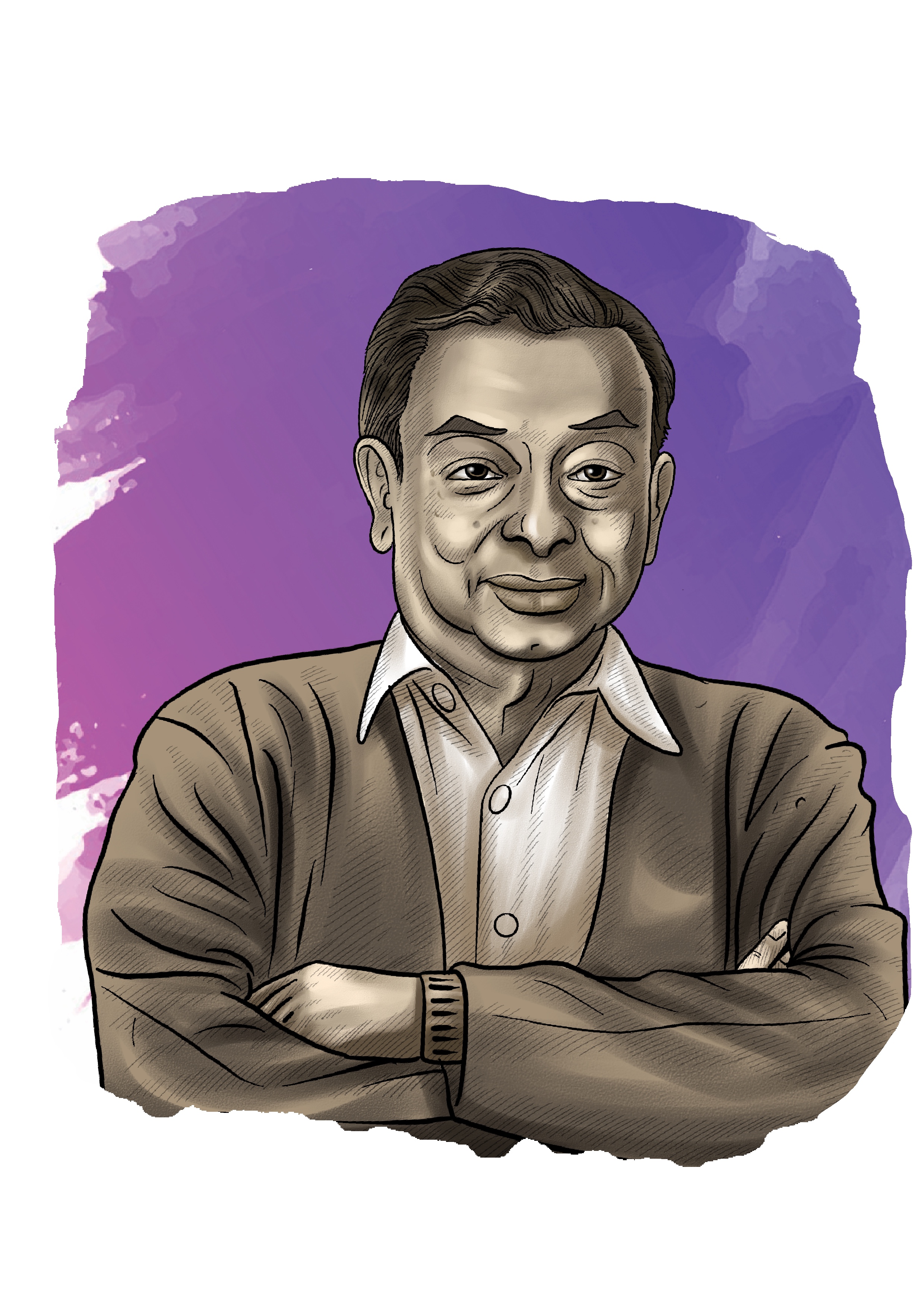
Verghese Kurien
Utterly-Butterly Milkman.
(26 November 1921 - 9 September 2012)
9 September 2012. A young girl, born under the supervision of Sylvester daCunha, who had, with wit and remark, borne witness to the events in Indian society over decades, shed her first solitary tear. She was in mourning, together with a great man’s family of Molly, his better half; daughter Nirmala; grandson Siddharth; and nieces Anita and Elen (who had lost their Jolly Apacha). The grief was shared by the whole nation, inconsolable at the passing of one of its favourite sons. Even as she was consumed by sorrow, the girl managed to thank the departed soul for giving us hausla (determination), Pragati (development), and Anand, the town in Gujarat, whose farmers woke up that day to learn of the singular tragedy.
Verghese Kurien often hailed as the “Father of the White Revolution” in India, had passed away at 90. His visionary leadership and pioneering work in the dairy industry transformed India from a milk-deficient nation into the largest milk producer in the world.
Anand, the epicentre of this revolution, was flooded with people—chiefly, farm hands—who poured in from all corners of the state to bid farewell to the man who had given them so much. During his early days in this provincial hamlet, after leaving a busy life in New York, Dr Kurien fumed that Anand was a “godforsaken place”. He recounts this in his autobiography, “I Too Had A Dream”, its title echoing the sentiments of Dr. Martin Luther King, who was a tireless advocate for civil rights in the United States. Nevertheless, he overcame this sentiment to charge headlong into battle, eventually transforming the landscape of the region and after that, the nation.
Born on 26 November 1921, in Kozhikode, Kerala, Kurien completed his studies in physics and mechanical engineering in India, before earning a Master's degree in mechanical engineering from Michigan State University. Upon his return to India, he was assigned to a government creamery in Anand, Gujarat, where he met Tribhuvandas Patel, the chairman of a local dairy cooperative named Kaira. It would alter his life.
Kurien's innovative thinking led to the development of the Amul brand in Anand, which became a symbol of the cooperative movement and rural empowerment. He played a pivotal role in the establishment of the Gujarat Cooperative Milk Marketing Federation (GCMMF) in 1973, which unified various cooperatives under the Amul brand. Another institution, the Indian Rural Management Institute, was among Kurien’s many bright ideas.It was dedicated to the systematic dissemination of theoretical and practical knowledge about the domain. This was sparked by a bitter exchange with an executive, who had remarked that no respectable graduate would seek employment in the dairy industry. Kurien had once declared that “Innovation cannot be mandated or forced on people”, but, with IRMA, he could at least try.
This was the headstrong side of Kurien, who could not stomach slights to the people to whom he had dedicated his life and those who, in turn, dedicated their lives to feeding the nation. Once, during a board meeting at the headquarters of Nestle in Switzerland, he stormed out after a disparaging remark about India’s ability to be a self-sufficient producer of dairy.
The Billion Litre Idea, was one of Kurien's most significant contributions, a strategic vision to scale up the co-operative model throughout India. This led to the launch of Operation Flood in 1970, a large-scale dairy development program that dramatically increased milk production and created a national milk grid. This initiative not only enhanced rural incomes but also ensured affordable milk prices for consumers across India.
The numbers speak for themselves. In 40 years, India’s annual milk production increased from 23.3 million tons (1968–69) to 100.9 million tons (2006–07). Daily per capita milk consumption in India more than doubled from a low of 107 grams in 1970 to over 240 grams in 2006. This sea-change was a direct consequence of the flood Dr. Kurien and his associates unleashed.
Kurien was awarded the Padma Shri, the Ramon Magsaysay Award for Community Leadership, the World Food Prize, and was also honoured as the International Person of the Year by the World Dairy Expo. His efforts not only revolutionised India's dairy sector but also provided a model for cooperative movements across the globe.
Kurien’s efforts inspired Shyam Benegal to make the classic film Manthan, which was funded by 500,000 dairy farmers of Gujarat. His life’s work is a lesson in how visionary leadership and dedication can bring about transformative change in society.
-
Verghese Kurien
Utterly-Butterly Milkman.
(26 November 1921 - 9 September 2012)
9 September 2012. A young girl, born under the supervision of Sylvester daCunha, who had, with wit and remark, borne witness to the events in Indian society over decades, shed her first solitary tear. She was in mourning, together with a great man’s family of Molly, his better half; daughter Nirmala; grandson Siddharth; and nieces Anita and Elen (who had lost their Jolly Apacha). The grief was shared by the whole nation, inconsolable at the passing of one of its favourite sons. Even as she was consumed by sorrow, the girl managed to thank the departed soul for giving us hausla (determination), Pragati (development), and Anand, the town in Gujarat, whose farmers woke up that day to learn of the singular tragedy.
Verghese Kurien often hailed as the “Father of the White Revolution” in India, had passed away at 90. His visionary leadership and pioneering work in the dairy industry transformed India from a milk-deficient nation into the largest milk producer in the world.
Anand, the epicentre of this revolution, was flooded with people—chiefly, farm hands—who poured in from all corners of the state to bid farewell to the man who had given them so much. During his early days in this provincial hamlet, after leaving a busy life in New York, Dr Kurien fumed that Anand was a “godforsaken place”. He recounts this in his autobiography, “I Too Had A Dream”, its title echoing the sentiments of Dr. Martin Luther King, who was a tireless advocate for civil rights in the United States. Nevertheless, he overcame this sentiment to charge headlong into battle, eventually transforming the landscape of the region and after that, the nation.Born on 26 November 1921, in Kozhikode, Kerala, Kurien completed his studies in physics and mechanical engineering in India, before earning a Master's degree in mechanical engineering from Michigan State University. Upon his return to India, he was assigned to a government creamery in Anand, Gujarat, where he met Tribhuvandas Patel, the chairman of a local dairy cooperative named Kaira. It would alter his life.
Kurien's innovative thinking led to the development of the Amul brand in Anand, which became a symbol of the cooperative movement and rural empowerment. He played a pivotal role in the establishment of the Gujarat Cooperative Milk Marketing Federation (GCMMF) in 1973, which unified various cooperatives under the Amul brand. Another institution, the Indian Rural Management Institute, was among Kurien’s many bright ideas.It was dedicated to the systematic dissemination of theoretical and practical knowledge about the domain. This was sparked by a bitter exchange with an executive, who had remarked that no respectable graduate would seek employment in the dairy industry. Kurien had once declared that “Innovation cannot be mandated or forced on people”, but, with IRMA, he could at least try.
This was the headstrong side of Kurien, who could not stomach slights to the people to whom he had dedicated his life and those who, in turn, dedicated their lives to feeding the nation. Once, during a board meeting at the headquarters of Nestle in Switzerland, he stormed out after a disparaging remark about India’s ability to be a self-sufficient producer of dairy.
The Billion Litre Idea, was one of Kurien's most significant contributions, a strategic vision to scale up the co-operative model throughout India. This led to the launch of Operation Flood in 1970, a large-scale dairy development program that dramatically increased milk production and created a national milk grid. This initiative not only enhanced rural incomes but also ensured affordable milk prices for consumers across India.
The numbers speak for themselves. In 40 years, India’s annual milk production increased from 23.3 million tons (1968–69) to 100.9 million tons (2006–07). Daily per capita milk consumption in India more than doubled from a low of 107 grams in 1970 to over 240 grams in 2006. This sea-change was a direct consequence of the flood Dr. Kurien and his associates unleashed.Kurien was awarded the Padma Shri, the Ramon Magsaysay Award for Community Leadership, the World Food Prize, and was also honoured as the International Person of the Year by the World Dairy Expo. His efforts not only revolutionised India's dairy sector but also provided a model for cooperative movements across the globe.
Kurien’s efforts inspired Shyam Benegal to make the classic film Manthan, which was funded by 500,000 dairy farmers of Gujarat. His life’s work is a lesson in how visionary leadership and dedication can bring about transformative change in society.
- Science & Tech
- Sports
- Business
- Entertainment & Culture
Science & Tech
Dr PK Kelkar
Building the Builders of Tomorrow
(1 June 1909 - 23 October 1990)
Dr Purushottam Kashinath Kelkar influenced some of the brightest minds in modern India during his career, all the while being the lynchpin behind two of the country’s most important institutes: the Indian Institute of Technology Kanpur (where he was founder director), and the Indian Institute of Technology Bombay (where he was the second director).
Dr Kelkar hailed from Dharwad, in northern Karnataka. His father was a professor of philosophy. His family remembered him as a quiet, self-effacing young man, who was gentle, yet firm. One of the early graduates from the Indian Institute of Science, Bangalore, he got his PhD from the University of Liverpool. He showcased his steely resolve there, overcoming the loss of his precious data in a fire, and completing the course. He returned to work at the IISc before furthering his career elsewhere.
Pandit Jawaharlal Nehru, a great promoter of science and an even greater believer in the power of technology to transform the country, facilitated the development of the IITs, following independence. IIT Kharagpur was the first such institution set up. In the 1950s, Pandit Nehru arranged for support from the USSR, India’s ally, to set up more IITs. A joint India-UNESCO mission was sent to the USSR for this. Dr Kelkar was part of this group. He would soon be appointed Deputy Director of the new institute in Mumbai. Although he did not get the top post, the government gave him the chance to be the founder director of a new IIT in Kanpur.
In 1959, to everyone’s surprise, he accepted this apparently lesser post. He later recounted people’s reaction: “When I came to Kanpur first to join as the Director of the Institute, almost everybody I met in Kanpur asked me if...I had wanted to commit professional suicide.”
Dr Kelkar then set out to prove everyone wrong. He had clear ideas on what he wanted from the school.
The Kanpur Indo-American Program (KIAP) was a major step in making the institute a world-class organisation. Educators from the Massachusetts Institute of Technology, arguably the world’s top engineering college, were early visitors, doubting that anything could be done there. Dr Kelkar’s approach and energy blew them away: the doubters became the believers.
His approach to excellence also reflected in the kind of people he hired: they were young, highly qualified, and imbued with a spirit of adventure. Many had given up promising and highly paid positions abroad to invest their time and energies in a fledgling institute: one must remember that the sheen and glamour that IITs have now, simply did not exist then. He also laid down founding principles that exist to the day: a spirit of academic freedom that is meant for every member of the faculty and student body.
The Director also paid attention to the people he employed, being instrumental in setting up a Campus school for the children of the people he employed. One of his proudest moments was when the son of a jeep-driver stood first in class.
After a decade-long tenure, he then got a job that he had originally wanted: as Director of IIT Bombay.
Dr Kelkar was honoured with the Padma Bhushan in 1969, an honour that he deserved only too well. An honour he may have prized even more is found today at his beloved institute: the campus library is named after him. The institute he founded is today among the world’s best, its alumni include icons like NR Narayana Murthy, a co-founder of Infosys.
His life is an example of the idea that one need not live merely for oneself, and that moulding future generations is something that every educator must aspire to.
-
Dr PK Kelkar
Building the Builders of Tomorrow
(1 June 1909 - 23 October 1990)
Dr Purushottam Kashinath Kelkar influenced some of the brightest minds in modern India during his career, all the while being the lynchpin behind two of the country’s most important institutes: the Indian Institute of Technology Kanpur (where he was founder director), and the Indian Institute of Technology Bombay (where he was the second director).
Dr Kelkar hailed from Dharwad, in northern Karnataka. His father was a professor of philosophy. His family remembered him as a quiet, self-effacing young man, who was gentle, yet firm. One of the early graduates from the Indian Institute of Science, Bangalore, he got his PhD from the University of Liverpool. He showcased his steely resolve there, overcoming the loss of his precious data in a fire, and completing the course. He returned to work at the IISc before furthering his career elsewhere.
Pandit Jawaharlal Nehru, a great promoter of science and an even greater believer in the power of technology to transform the country, facilitated the development of the IITs, following independence. IIT Kharagpur was the first such institution set up. In the 1950s, Pandit Nehru arranged for support from the USSR, India’s ally, to set up more IITs. A joint India-UNESCO mission was sent to the USSR for this. Dr Kelkar was part of this group. He would soon be appointed Deputy Director of the new institute in Mumbai. Although he did not get the top post, the government gave him the chance to be the founder director of a new IIT in Kanpur.
In 1959, to everyone’s surprise, he accepted this apparently lesser post. He later recounted people’s reaction: “When I came to Kanpur first to join as the Director of the Institute, almost everybody I met in Kanpur asked me if...I had wanted to commit professional suicide.”
Dr Kelkar then set out to prove everyone wrong. He had clear ideas on what he wanted from the school.
The Kanpur Indo-American Program (KIAP) was a major step in making the institute a world-class organisation. Educators from the Massachusetts Institute of Technology, arguably the world’s top engineering college, were early visitors, doubting that anything could be done there. Dr Kelkar’s approach and energy blew them away: the doubters became the believers.
His approach to excellence also reflected in the kind of people he hired: they were young, highly qualified, and imbued with a spirit of adventure. Many had given up promising and highly paid positions abroad to invest their time and energies in a fledgling institute: one must remember that the sheen and glamour that IITs have now, simply did not exist then. He also laid down founding principles that exist to the day: a spirit of academic freedom that is meant for every member of the faculty and student body.
The Director also paid attention to the people he employed, being instrumental in setting up a Campus school for the children of the people he employed. One of his proudest moments was when the son of a jeep-driver stood first in class.
After a decade-long tenure, he then got a job that he had originally wanted: as Director of IIT Bombay.
Dr Kelkar was honoured with the Padma Bhushan in 1969, an honour that he deserved only too well. An honour he may have prized even more is found today at his beloved institute: the campus library is named after him. The institute he founded is today among the world’s best, its alumni include icons like NR Narayana Murthy, a co-founder of Infosys.
His life is an example of the idea that one need not live merely for oneself, and that moulding future generations is something that every educator must aspire to.
- Sports
- Business
- Entertainment & Culture
Sports
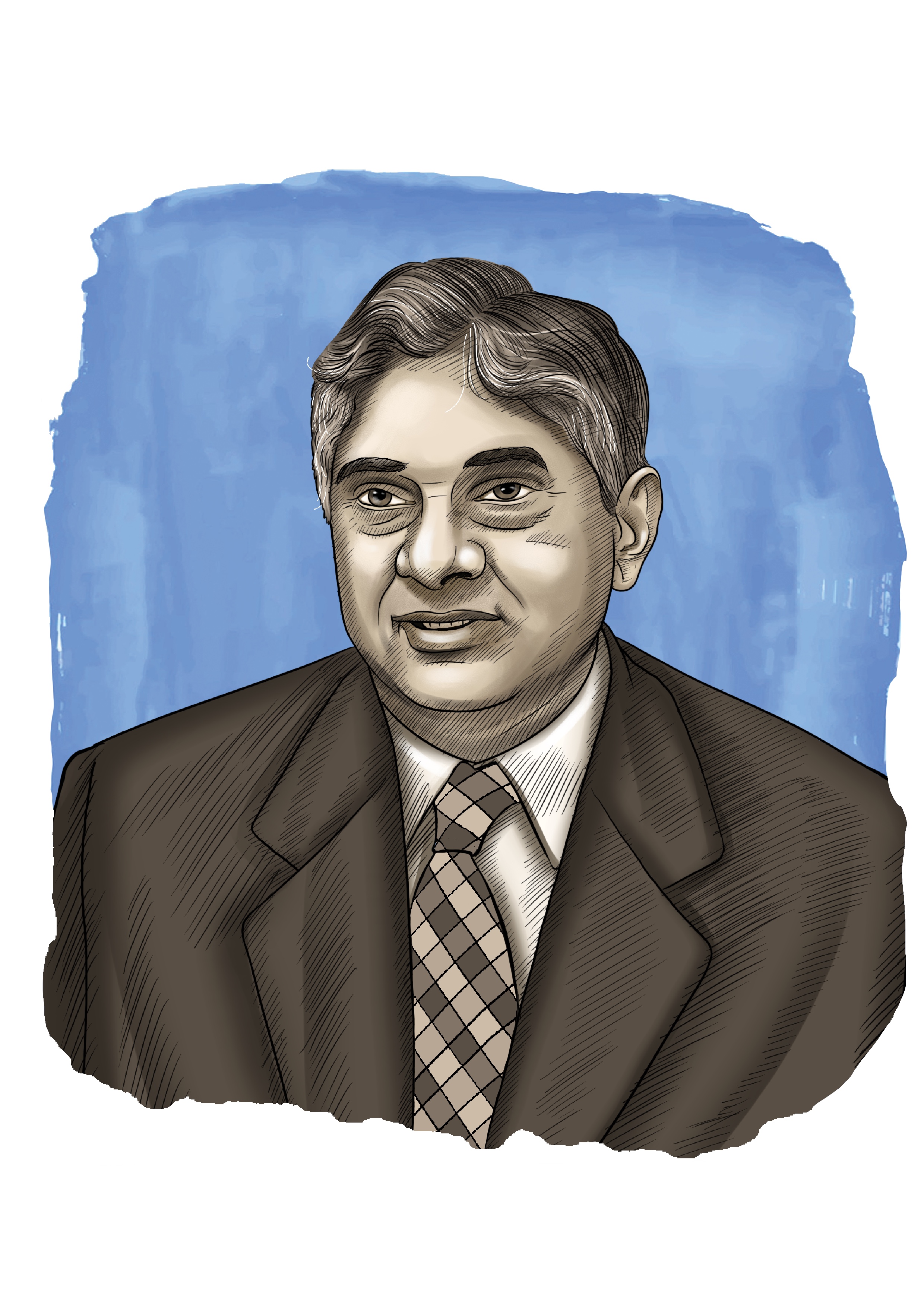
Hanumant Singh
The Little Prince
(29 March 1939 - 29 November 2006)
Hanumant Singh was a cricketer born into a royal family (in Banswara, Rajasthan) and played like the pitch was his kingdom. His life was defined by his passion for cricket, which he pursued despite the pressures of royal expectations. He was affectionately known as "Chhotu" due to his height.
Making his Test debut against England in February 1964, Singh announced himself in regal style by scoring 105 runs, becoming the fifth Indian to achieve a century on debut. This remarkable performance set high expectations for his career, and he followed it up with an impressive 94 in his first Test against Australia later that same year. His ability to perform under pressure highlighted not only his talent but also his potential to be a cornerstone of the Indian batting lineup.
Despite these promising beginnings, Singh struggled to maintain the same level of success after his initial triumphs. His subsequent performances were inconsistent, and although he had the skills to be a top batsman, he never fulfilled his early promise.
His batting style was characterised by a graceful approach and an ability to work the ball around the leg side. However, despite his capabilities, he found himself dropped from the team during the 1967-68 tour of Australia, a decision that disheartened him.
He also displayed an uncanny ability to rise to the occasion. Once, playing on a pitch damaged by rioters, he held his own against an attack that included Lance Gibbs, perhaps the world's premier spinner at the time. No less an authority than Garfield Sobers — the opposing captain — was impressed by this performance.
Beyond his playing days, he transitioned into coaching and administration, contributing significantly to the development of cricket across the world. He managed the Indian team during the late 1970s and was also involved with the Rajasthan cricket team, guiding young talent and sharing his vast knowledge of the game. Cricket was not his only love; as a young man he loved hockey and football. In his later years, he took up golf, confessing himself to be an addict of the game.
He also served as a match referee for the International Cricket Council (ICC), his unbiased judgments earning him respect from players and officials alike. He was unafraid to use the cudgel even if it was a big name who had broken the rules. He also had a long tenure as coach of the Kenya cricket team, which saw them rise from minnows to true competitors.
Singh’s life took a tragic turn in his later years when he battled health issues. He contracted dengue fever and Hepatitis B, which led to severe complications, ultimately resulting in his untimely passing at the age of 67.
Those who knew him best remember him not just for his contributions on the field but for the warmth and humility he brought to every interaction. Bishan Singh Bedi remarked that "He always thought of others before himself," a sentiment that perfectly encapsulated Hanumant Singh's character and legacy in cricket.
In a world where statistics often overshadow personal stories, Singh’s journey serves as a poignant reminder of the values of resilience, humility, and dedication. His legacy continues to inspire aspiring cricketers, particularly in Rajasthan, where he remains a symbol of what it means to serve the sport with honour and grace.
-
Hanumant Singh
The Little Prince
(29 March 1939 - 29 November 2006)
Hanumant Singh was a cricketer born into a royal family (in Banswara, Rajasthan) and played like the pitch was his kingdom. His life was defined by his passion for cricket, which he pursued despite the pressures of royal expectations. He was affectionately known as "Chhotu" due to his height.
Making his Test debut against England in February 1964, Singh announced himself in regal style by scoring 105 runs, becoming the fifth Indian to achieve a century on debut. This remarkable performance set high expectations for his career, and he followed it up with an impressive 94 in his first Test against Australia later that same year. His ability to perform under pressure highlighted not only his talent but also his potential to be a cornerstone of the Indian batting lineup.
Despite these promising beginnings, Singh struggled to maintain the same level of success after his initial triumphs. His subsequent performances were inconsistent, and although he had the skills to be a top batsman, he never fulfilled his early promise.
His batting style was characterised by a graceful approach and an ability to work the ball around the leg side. However, despite his capabilities, he found himself dropped from the team during the 1967-68 tour of Australia, a decision that disheartened him.
He also displayed an uncanny ability to rise to the occasion. Once, playing on a pitch damaged by rioters, he held his own against an attack that included Lance Gibbs, perhaps the world's premier spinner at the time. No less an authority than Garfield Sobers — the opposing captain — was impressed by this performance.
Beyond his playing days, he transitioned into coaching and administration, contributing significantly to the development of cricket across the world. He managed the Indian team during the late 1970s and was also involved with the Rajasthan cricket team, guiding young talent and sharing his vast knowledge of the game. Cricket was not his only love; as a young man he loved hockey and football. In his later years, he took up golf, confessing himself to be an addict of the game.
He also served as a match referee for the International Cricket Council (ICC), his unbiased judgments earning him respect from players and officials alike. He was unafraid to use the cudgel even if it was a big name who had broken the rules. He also had a long tenure as coach of the Kenya cricket team, which saw them rise from minnows to true competitors.
Singh’s life took a tragic turn in his later years when he battled health issues. He contracted dengue fever and Hepatitis B, which led to severe complications, ultimately resulting in his untimely passing at the age of 67.
Those who knew him best remember him not just for his contributions on the field but for the warmth and humility he brought to every interaction. Bishan Singh Bedi remarked that "He always thought of others before himself," a sentiment that perfectly encapsulated Hanumant Singh's character and legacy in cricket.
In a world where statistics often overshadow personal stories, Singh’s journey serves as a poignant reminder of the values of resilience, humility, and dedication. His legacy continues to inspire aspiring cricketers, particularly in Rajasthan, where he remains a symbol of what it means to serve the sport with honour and grace.
- Science & Tech
- Sports
- Entertainment & Culture
- Special Mentions
Science & Tech
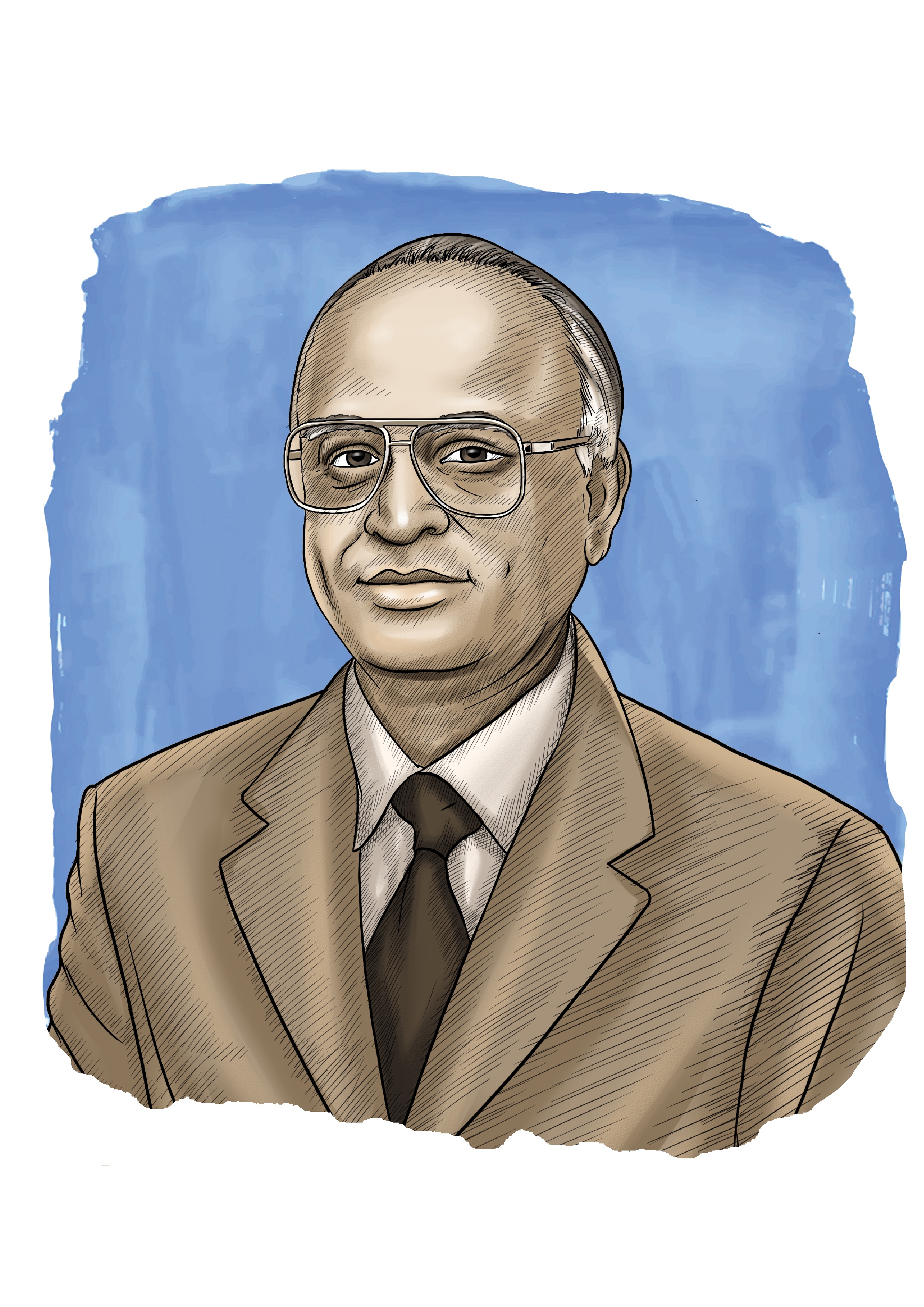
Dr PK Iyengar
He harnessed the power of atoms.
(29 June 1931 – 21 December 2011)
From 1990 to 1993, Dr Padmanabha Krishnagopal Iyengar held one of the most important roles in government, yet he is virtually unknown outside of academic or government circles. Twenty years before that, he was the second-in-command when India carried out one of the most audacious moves of the twentieth century: the successful testing of the first Indian-made atomic bomb.
A teenager when India became an independent nation, Iyengar set about with a revolutionary spirit to solve an age-old conundrum: to make the country stand on its own legs. Dr Iyengar's career saw him hailed as an Indian pioneer of neutron scattering research. He started his career at the Tata Institute of Fundamental Research and later served as Director of the Bhabha Atomic Research Centre. He was involved in commissioning Dhruva, the first nuclear reactor in the country.
When in 1990, he became Chairman of the Atomic Energy Commission (AEC), he truly was the first of a kind: the first Chairman who had done his training in India, except for an 18-month stint in Canada.
But his legacy, like many others, rests on the results of a single day: 18 May 1974. Deceiving the spy satellites of the US, India carried out 'Smiling Buddha' an atomic bomb test, announcing its arrival as a nuclear power.
In 1972, after the Prime Minister had given the go-ahead for the test, the great Raja Ramanna, who had overall responsibility, elevated Iyengar as the leader of the team to make this dream possible. Under great secrecy, the team raced to build a weapon that would instantly vault India to superpower status.
Later, Dr Iyengar would describe his time in the project as ‘the most exhilarating experience of my career … This involved building up a group, inculcating a spirit of cooperation and jointly achieving results’.
He was also confident in his abilities, a crucial factor in making such a huge enterprise work. When someone asked him, at the height of the preparations for Pokhran, if he would be prepared to take on the failure, he coolly retorted "If it fails, it is physics that would fail." Retirement barely slowed him down: following his stint at the AEC, he served as a scientific advisor to the Kerala government, setting up the Rajiv Gandhi Centre for Biotechnology. He also promoted a foundation that is involved in taking science learning to the village level.
Dr Iyengar may have succeeded in making India a nuclear power, but his contributions as an administrator, educator, and populariser of science remain equally important. To the end, he stressed the importance of studying the right way and the importance of learning for the sake of learning. He also lamented that science education in schools did not emphasise the need for science in everyday life, "which is what science is for."
As an administrator, he understood the importance of processes and also its limits: he would not allow mere procedural issues to come in the way of science. As an educator, he recognised the importance of good communication. He noted that "science needs a dialogue between the guide and the student."
Dr Iyengar's legacy is secure. No one did more to ensure that the nation he loved so much could protect itself.
-
Dr PK Iyengar
He harnessed the power of atoms.
(29 June 1931 – 21 December 2011)
From 1990 to 1993, Dr Padmanabha Krishnagopal Iyengar held one of the most important roles in government, yet he is virtually unknown outside of academic or government circles. Twenty years before that, he was the second-in-command when India carried out one of the most audacious moves of the twentieth century: the successful testing of the first Indian-made atomic bomb.
A teenager when India became an independent nation, Iyengar set about with a revolutionary spirit to solve an age-old conundrum: to make the country stand on its own legs. Dr Iyengar's career saw him hailed as an Indian pioneer of neutron scattering research. He started his career at the Tata Institute of Fundamental Research and later served as Director of the Bhabha Atomic Research Centre. He was involved in commissioning Dhruva, the first nuclear reactor in the country.
When in 1990, he became Chairman of the Atomic Energy Commission (AEC), he truly was the first of a kind: the first Chairman who had done his training in India, except for an 18-month stint in Canada.
But his legacy, like many others, rests on the results of a single day: 18 May 1974. Deceiving the spy satellites of the US, India carried out 'Smiling Buddha' an atomic bomb test, announcing its arrival as a nuclear power.
In 1972, after the Prime Minister had given the go-ahead for the test, the great Raja Ramanna, who had overall responsibility, elevated Iyengar as the leader of the team to make this dream possible. Under great secrecy, the team raced to build a weapon that would instantly vault India to superpower status.
Later, Dr Iyengar would describe his time in the project as ‘the most exhilarating experience of my career … This involved building up a group, inculcating a spirit of cooperation and jointly achieving results’.
He was also confident in his abilities, a crucial factor in making such a huge enterprise work. When someone asked him, at the height of the preparations for Pokhran, if he would be prepared to take on the failure, he coolly retorted "If it fails, it is physics that would fail." Retirement barely slowed him down: following his stint at the AEC, he served as a scientific advisor to the Kerala government, setting up the Rajiv Gandhi Centre for Biotechnology. He also promoted a foundation that is involved in taking science learning to the village level.
Dr Iyengar may have succeeded in making India a nuclear power, but his contributions as an administrator, educator, and populariser of science remain equally important. To the end, he stressed the importance of studying the right way and the importance of learning for the sake of learning. He also lamented that science education in schools did not emphasise the need for science in everyday life, "which is what science is for."
As an administrator, he understood the importance of processes and also its limits: he would not allow mere procedural issues to come in the way of science. As an educator, he recognised the importance of good communication. He noted that "science needs a dialogue between the guide and the student."
Dr Iyengar's legacy is secure. No one did more to ensure that the nation he loved so much could protect itself.
The information available on this page is for informational purposes only and is neither an offer to purchase, nor a solicitation of an offer to sell, subscribe for or buy any insurance products.
HDFC Life Insurance Company Limited (“HDFC Life”), has used all reasonable measures to ensure that the information on this web page related to Obituary is as accurate. However, HDFC Life does not warrant or guarantee that the information is accurate, complete, current, or fit for any use whatsoever. No reliance should be made by a user of the information accessed via this web page.
HDFC Life accepts no liability or responsibility for any loss or damage whatsoever suffered as a result of direct or indirect use of the information made accessible via this website. HDFC Life reserves the right to change the information on this website without notice.
ARN- ED/08/24/14946


